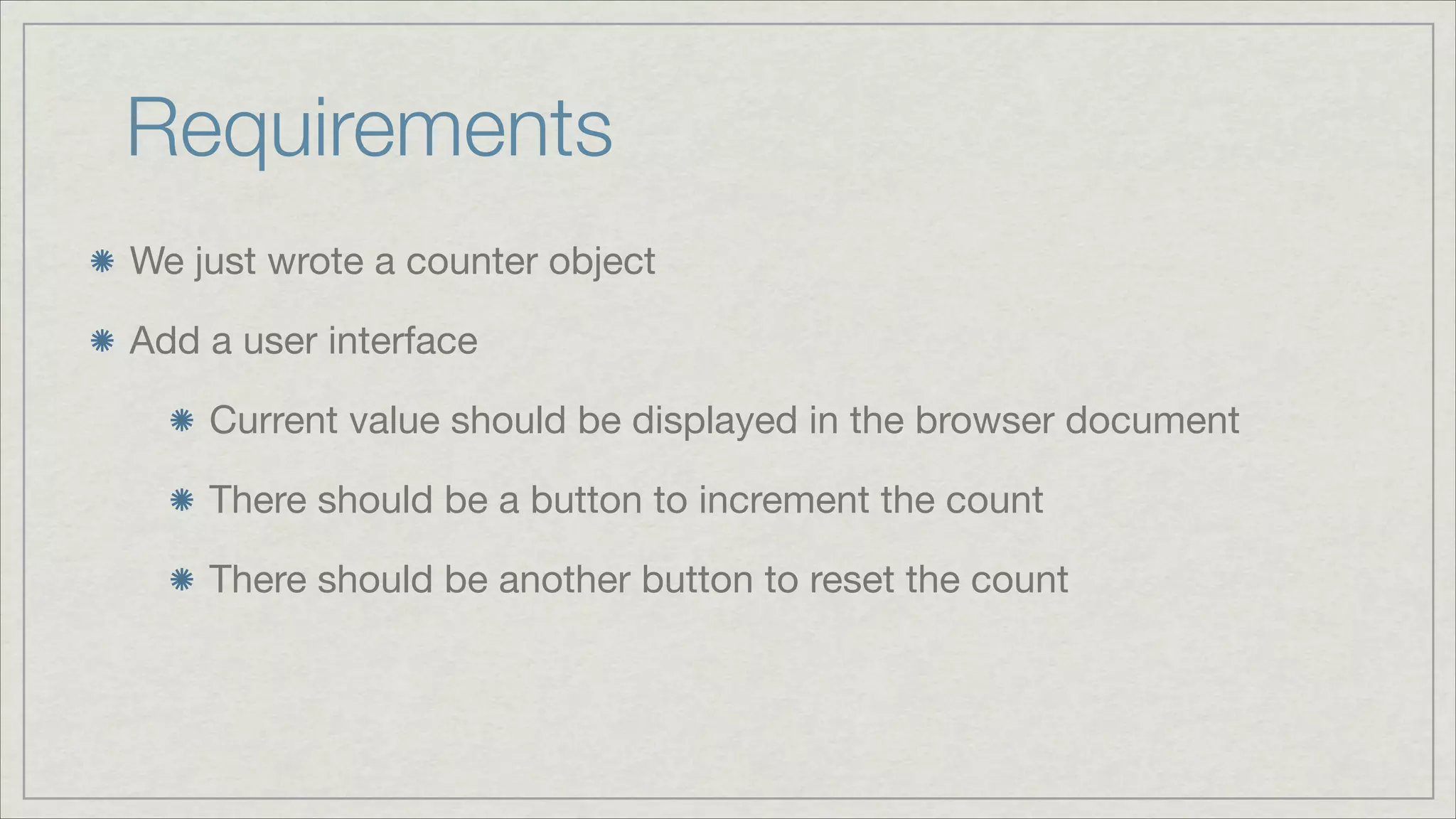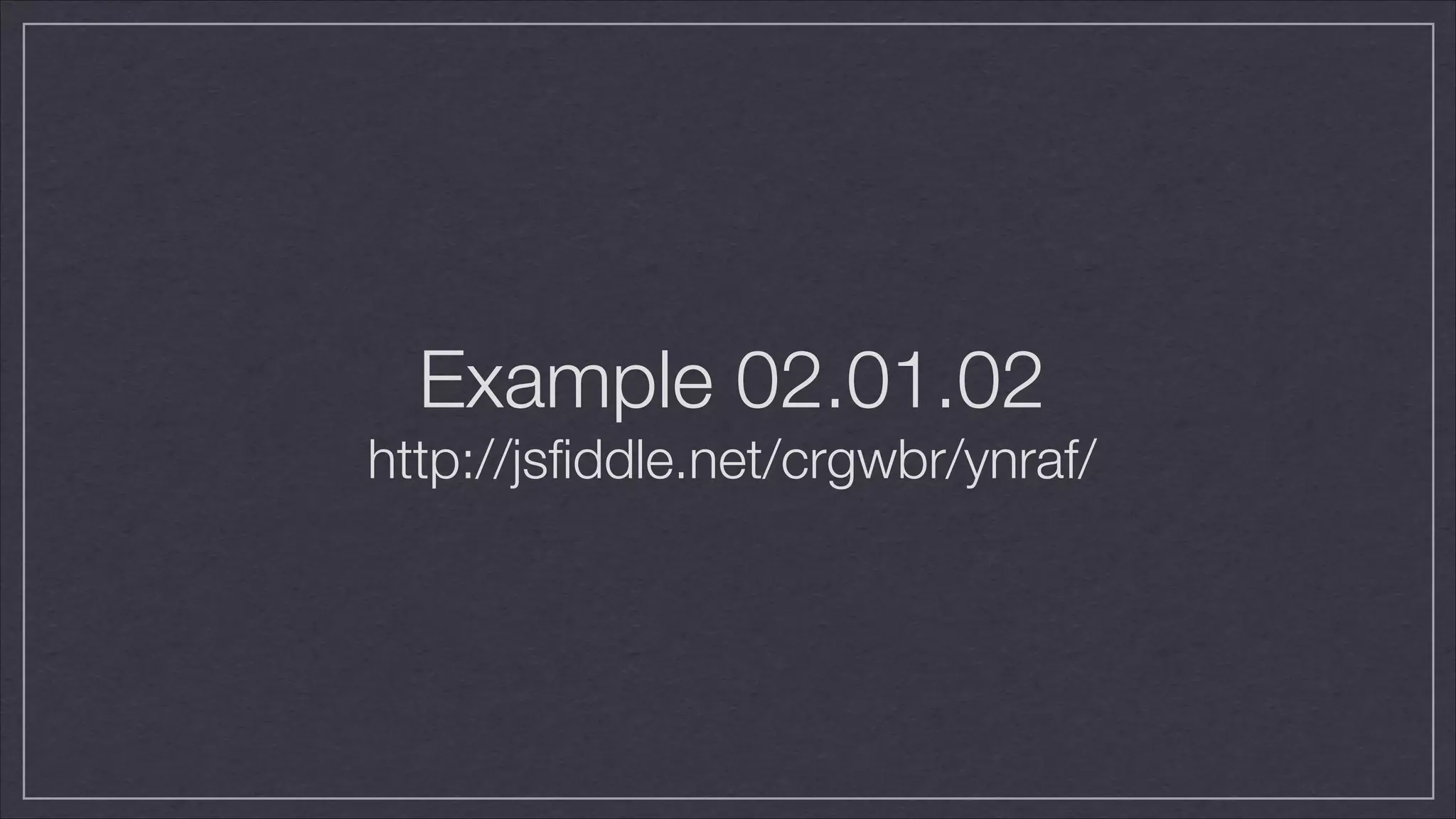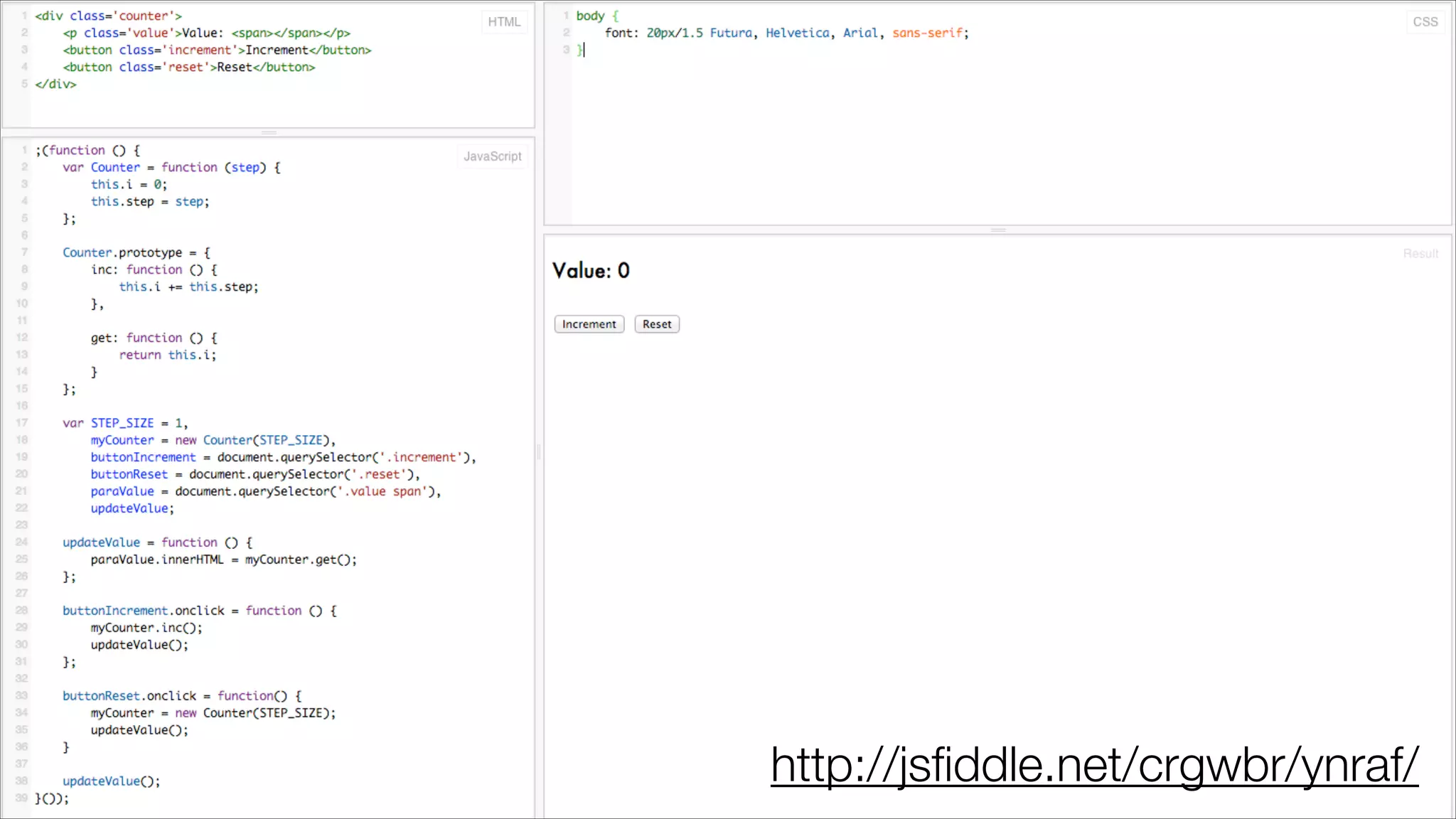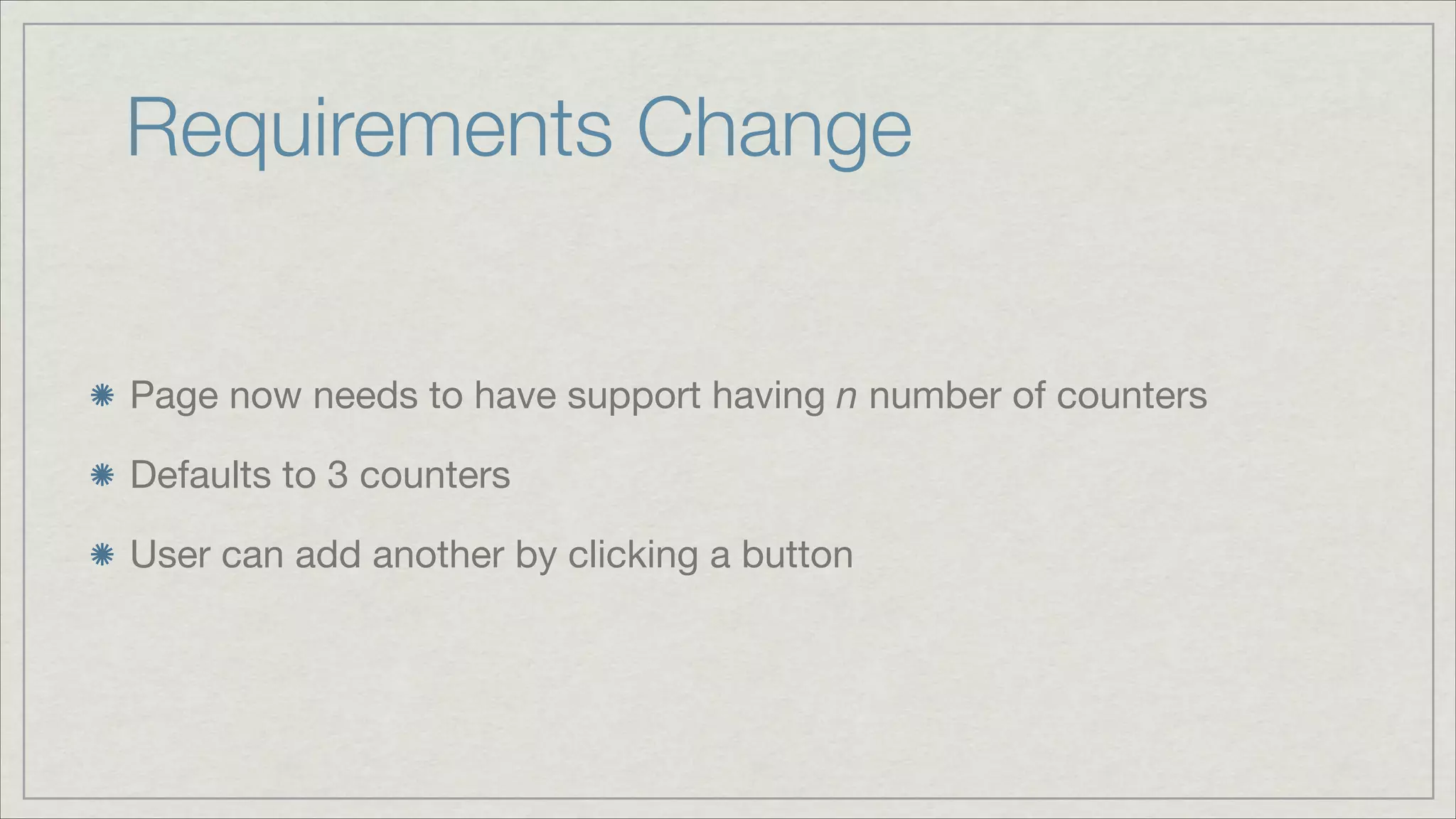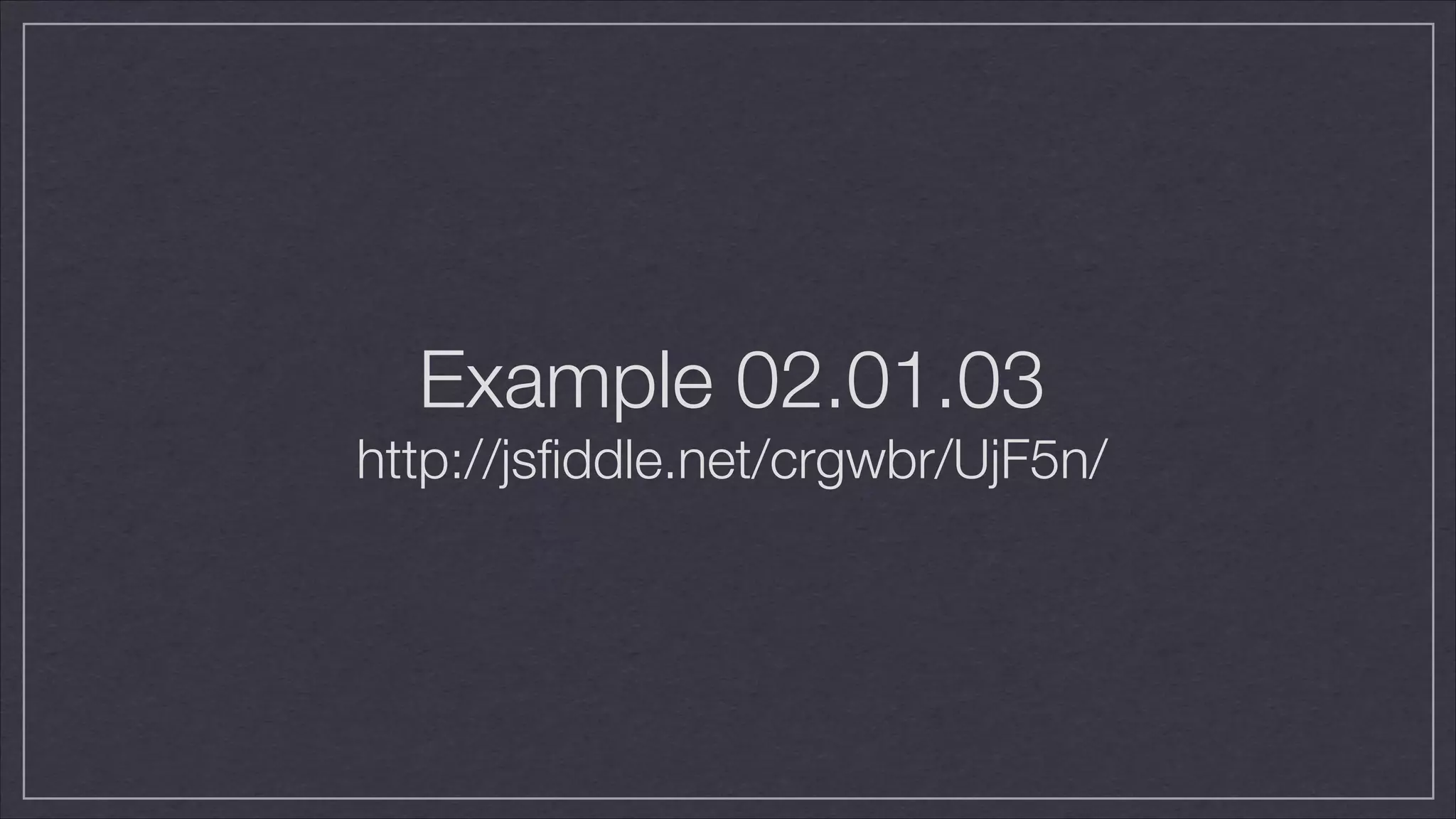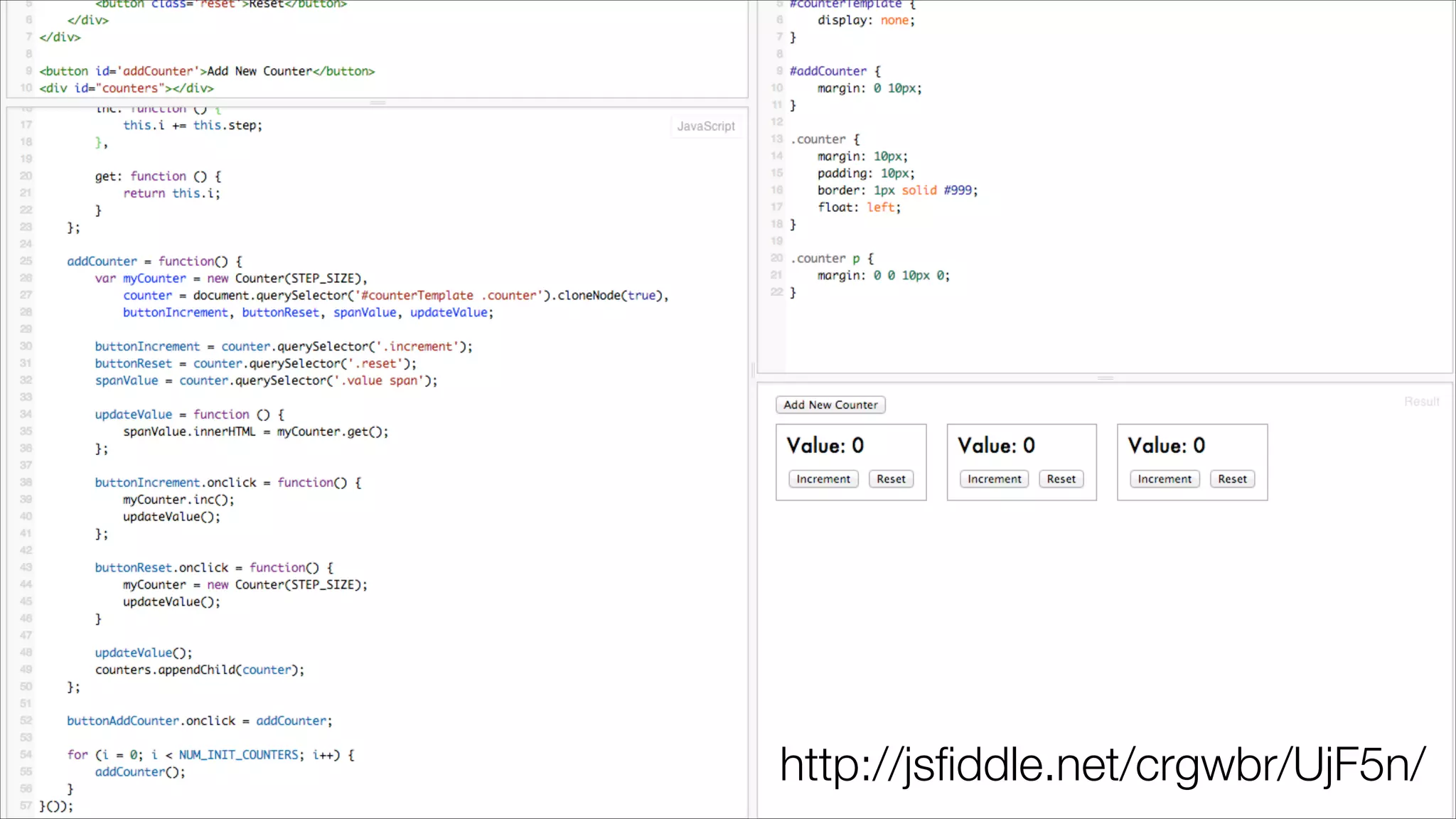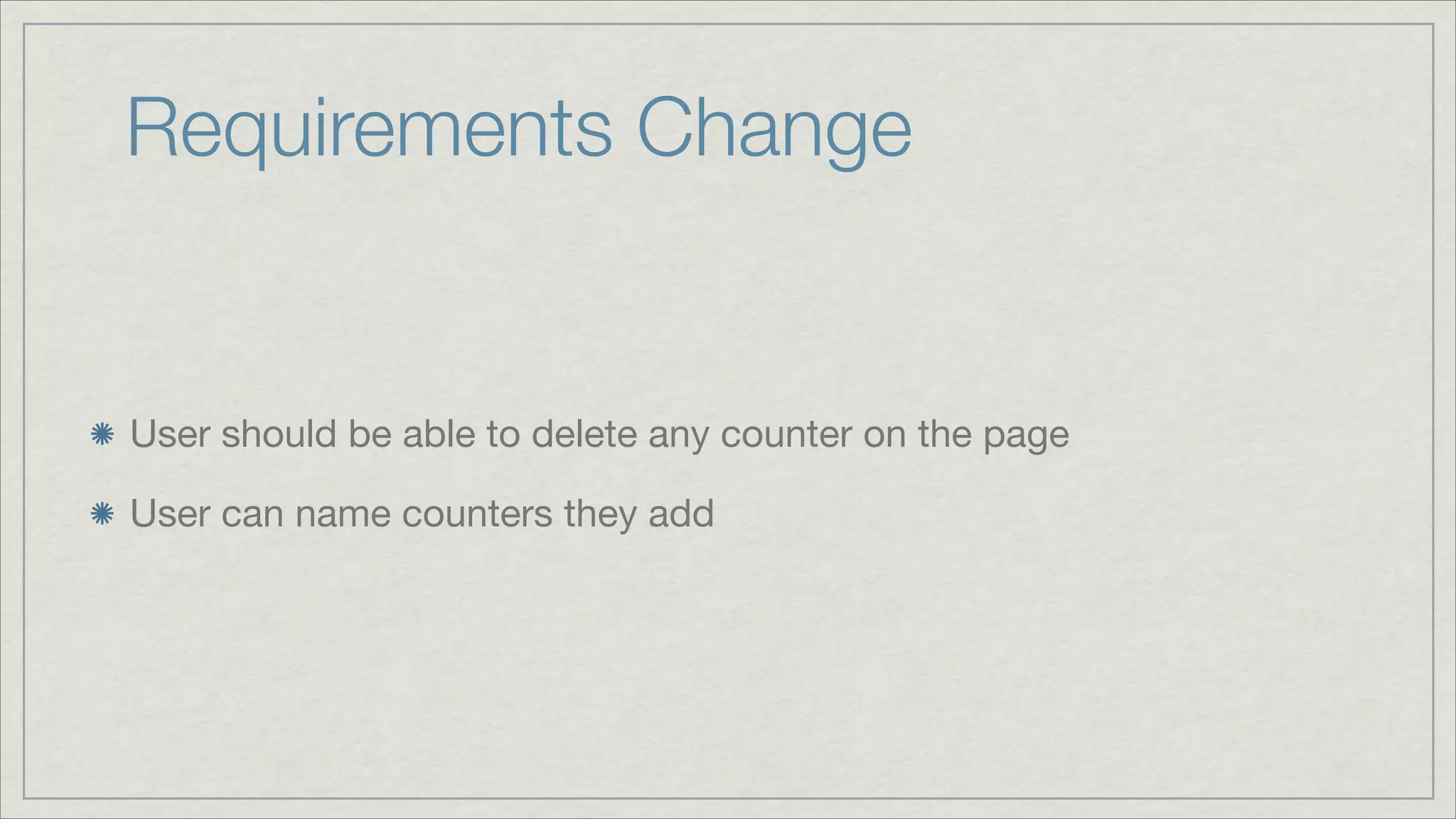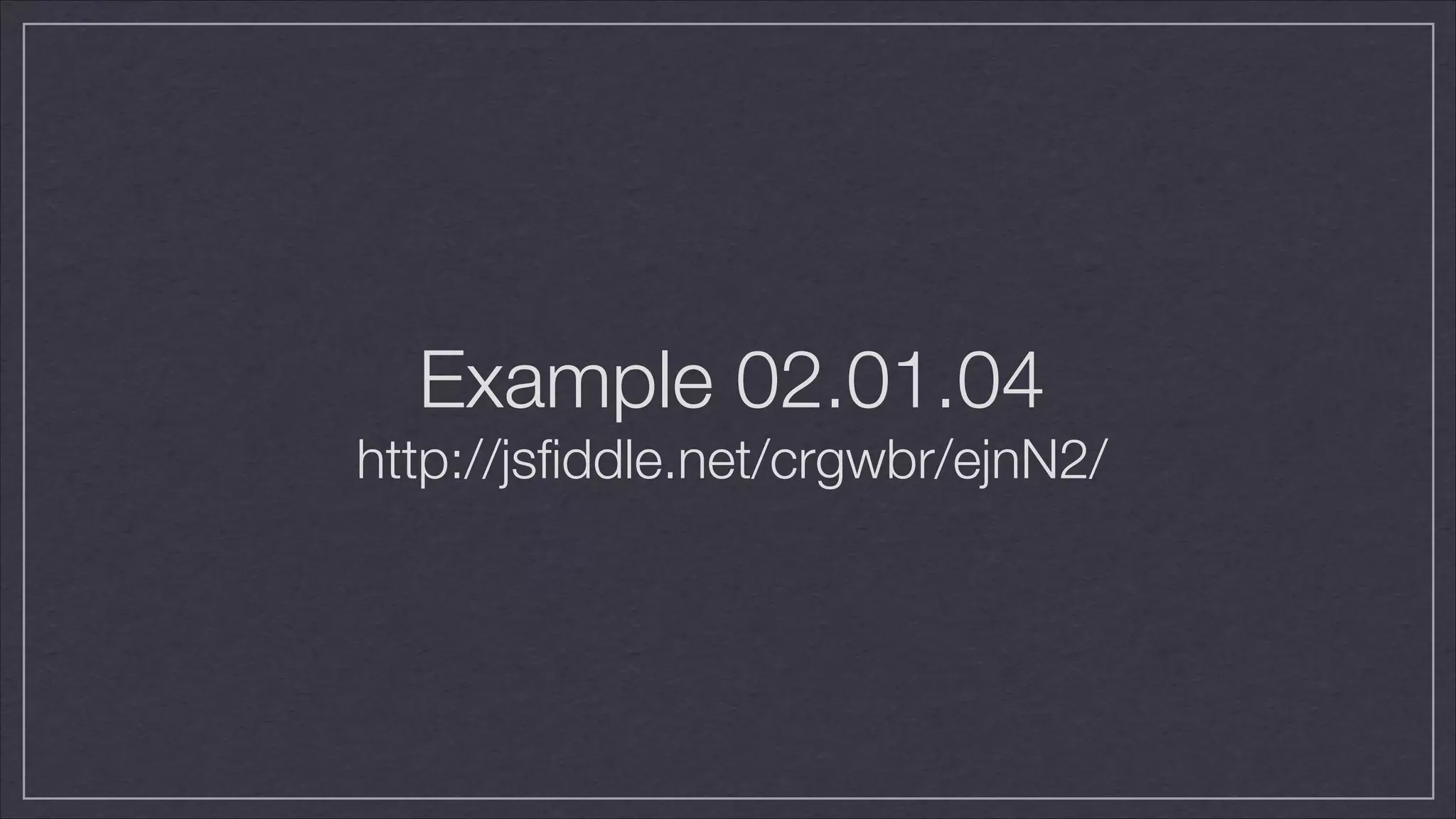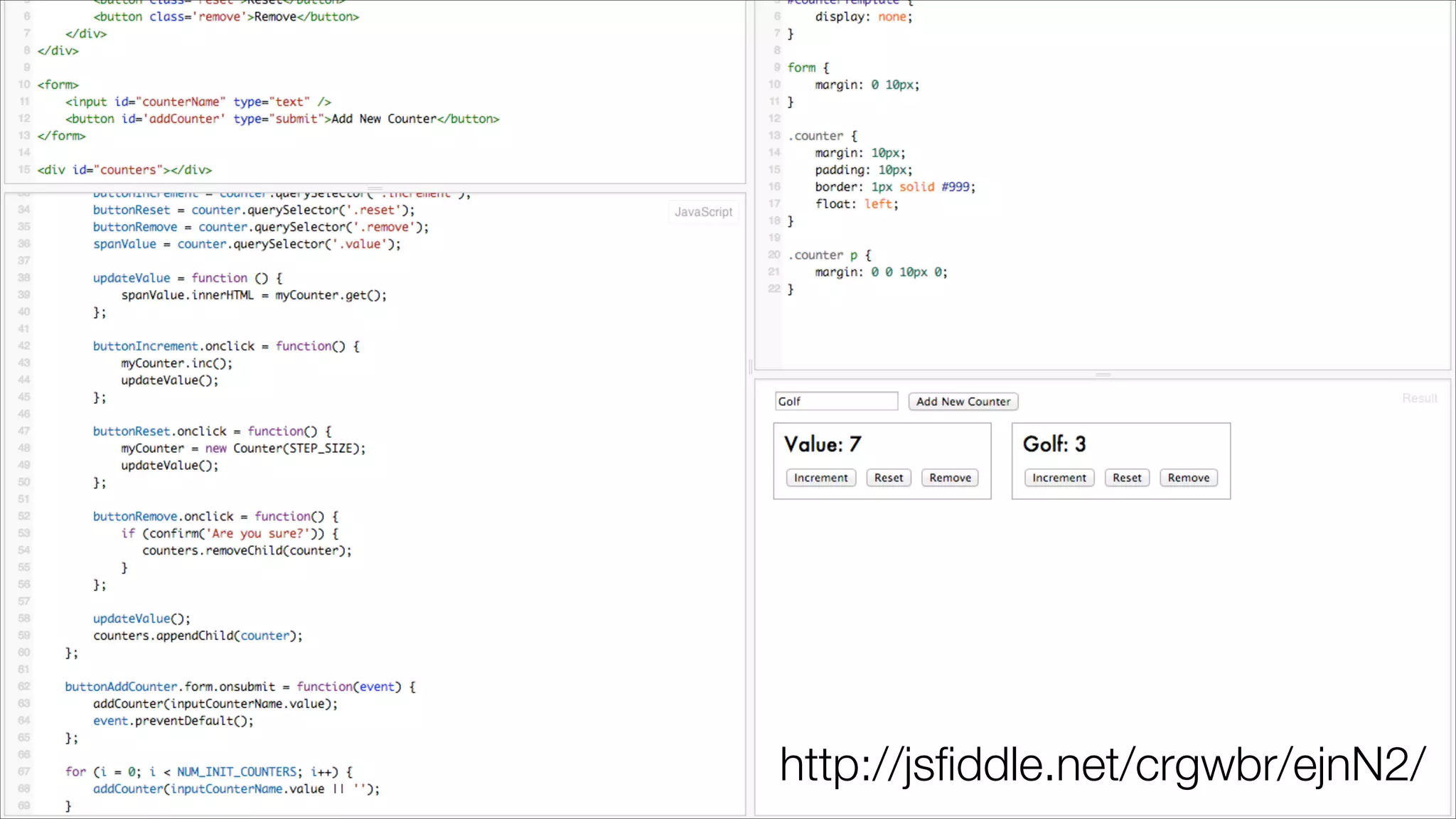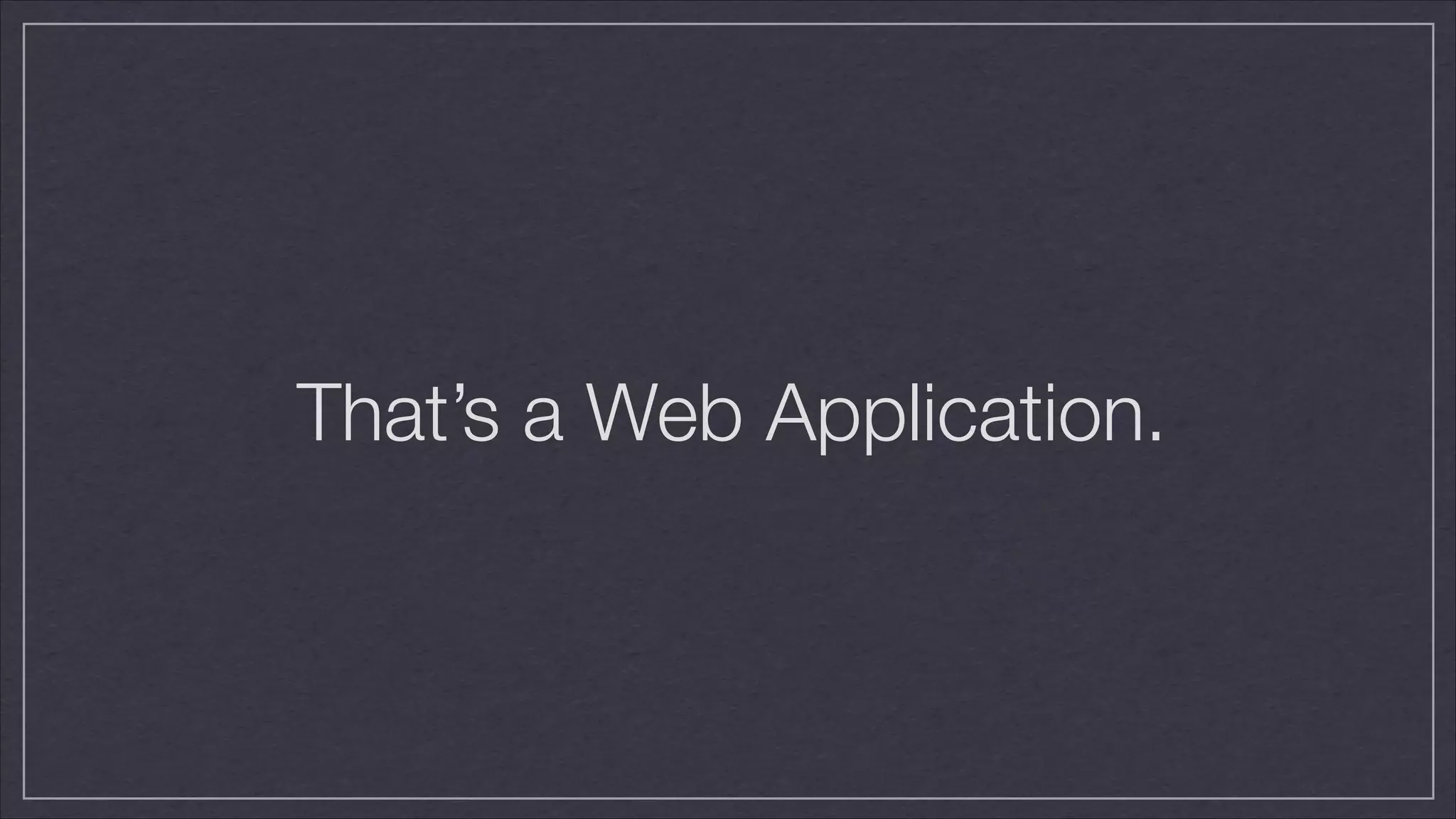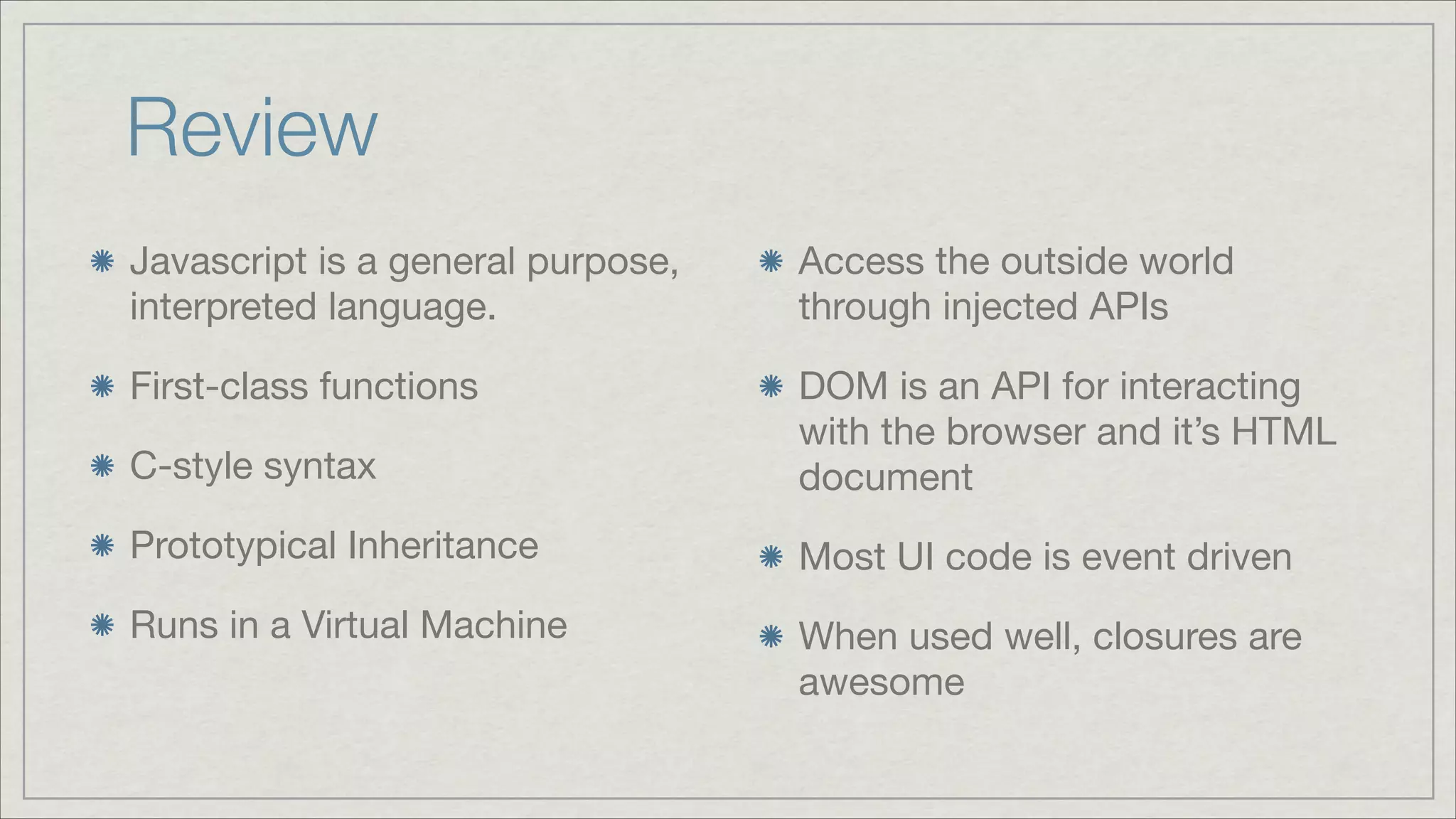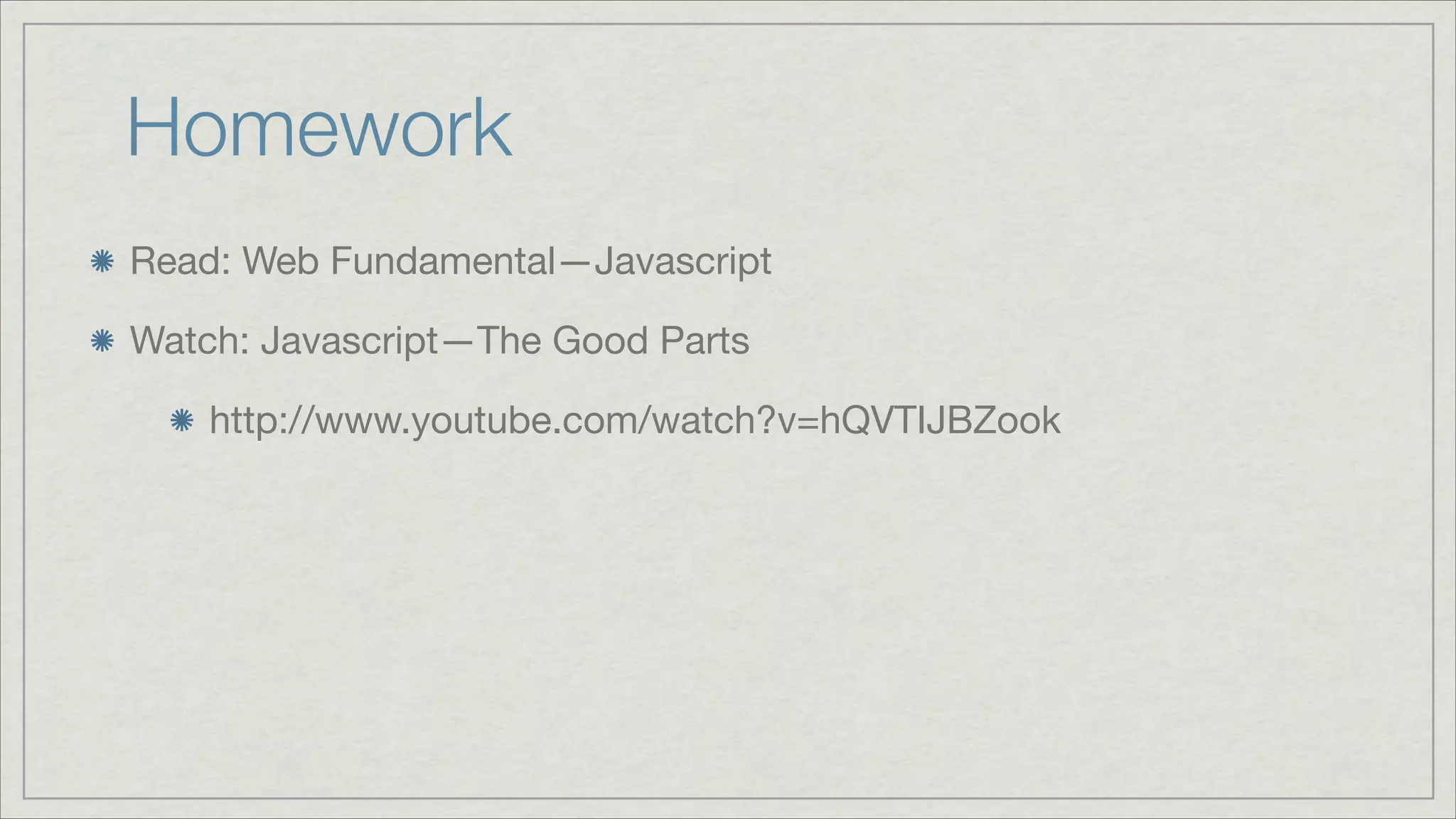JavaScript is an interpreted programming language that allows client-side scripts to interact with users and alter document content displayed in web browsers. It enables functionality like Gmail by communicating asynchronously through browser APIs. JavaScript uses lexical scoping, closures, and prototypical inheritance. It has a DOM API for manipulating the HTML document and building interactive web applications with event-driven user interfaces. The lesson discusses JavaScript data types, expressions vs statements, functions, scopes, closures, and object-oriented programming patterns to create reusable components like counters with increment buttons. Homework includes reading about JavaScript fundamentals and watching a video on its good parts.
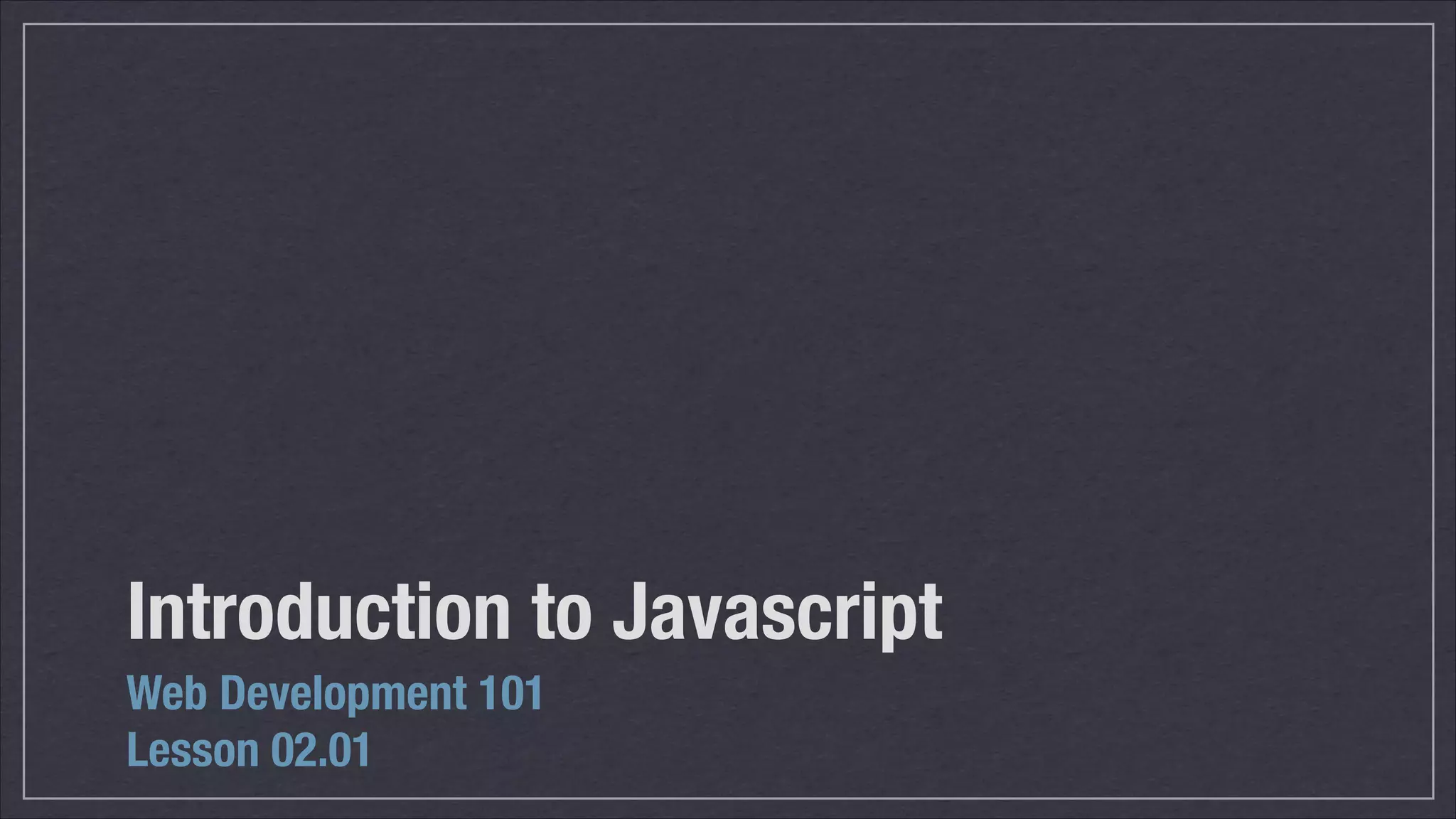
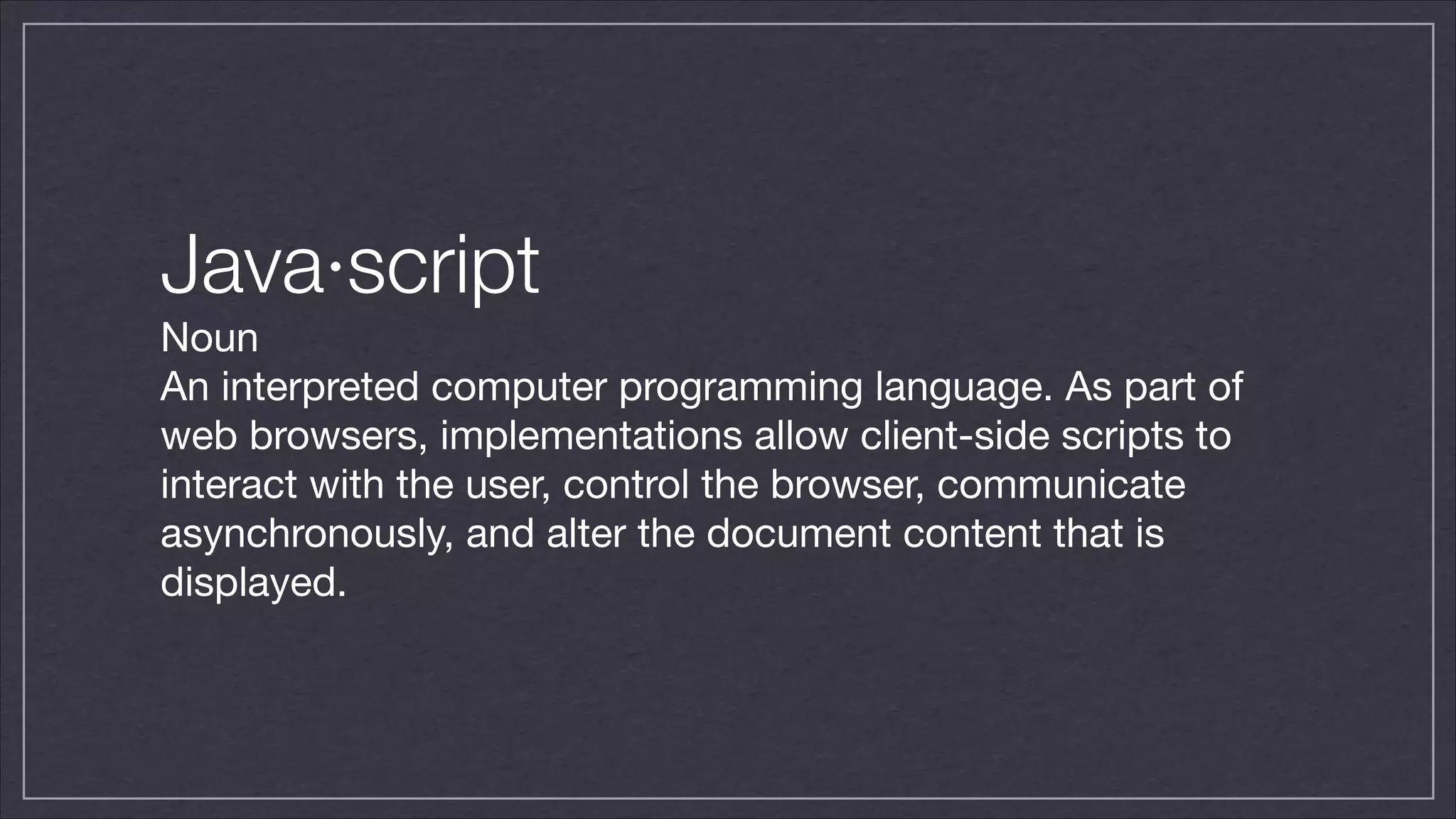
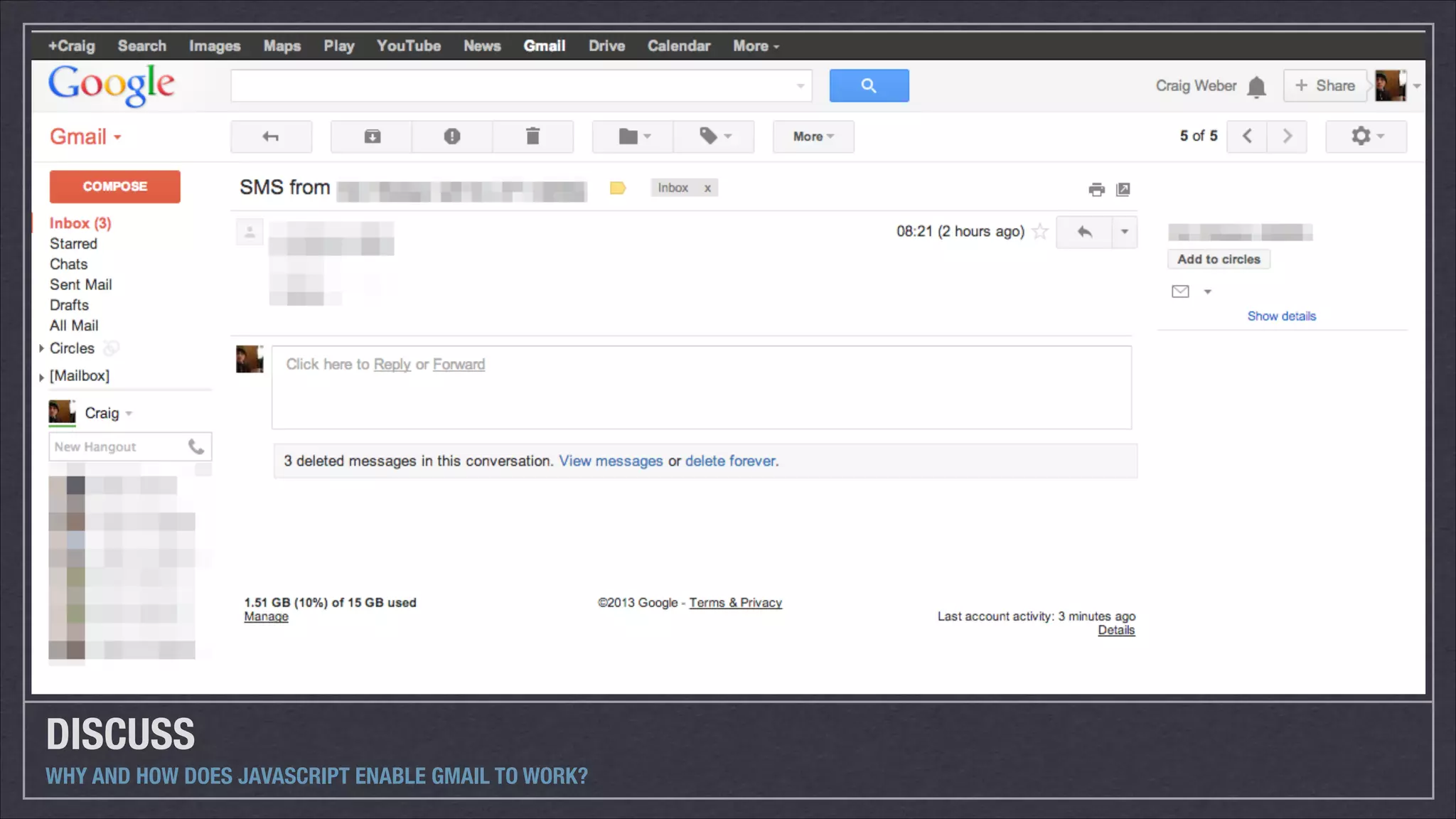
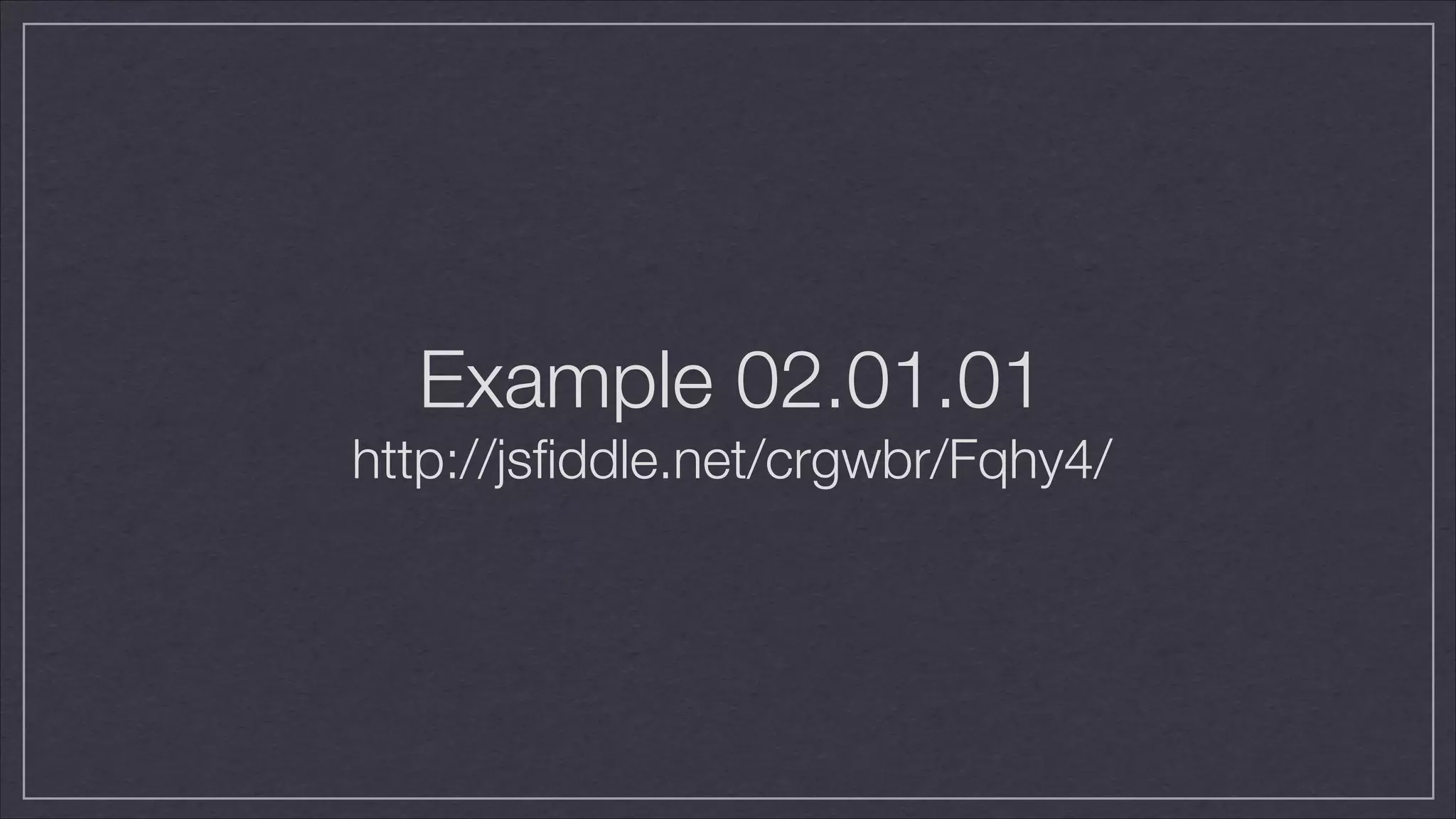
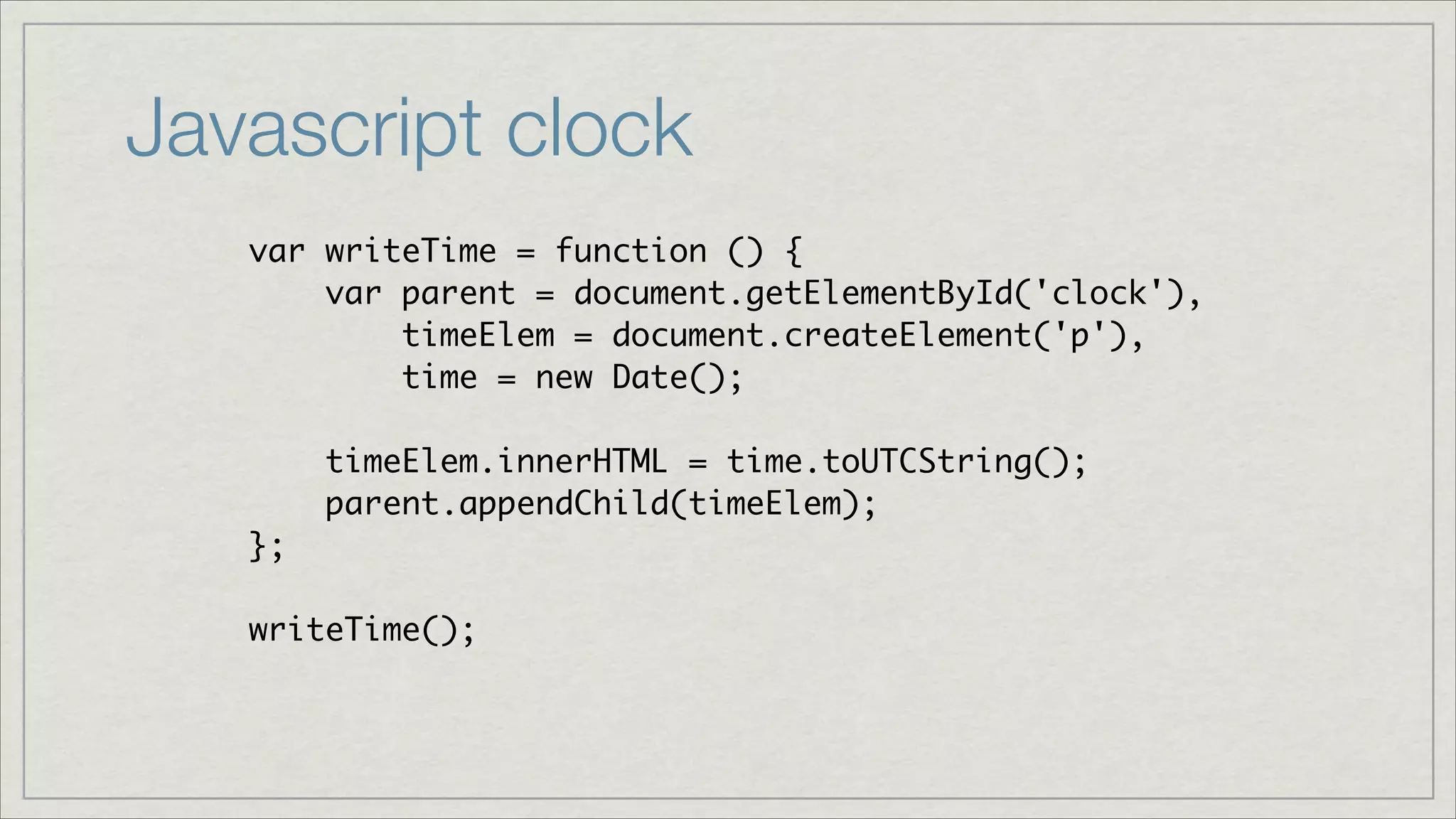
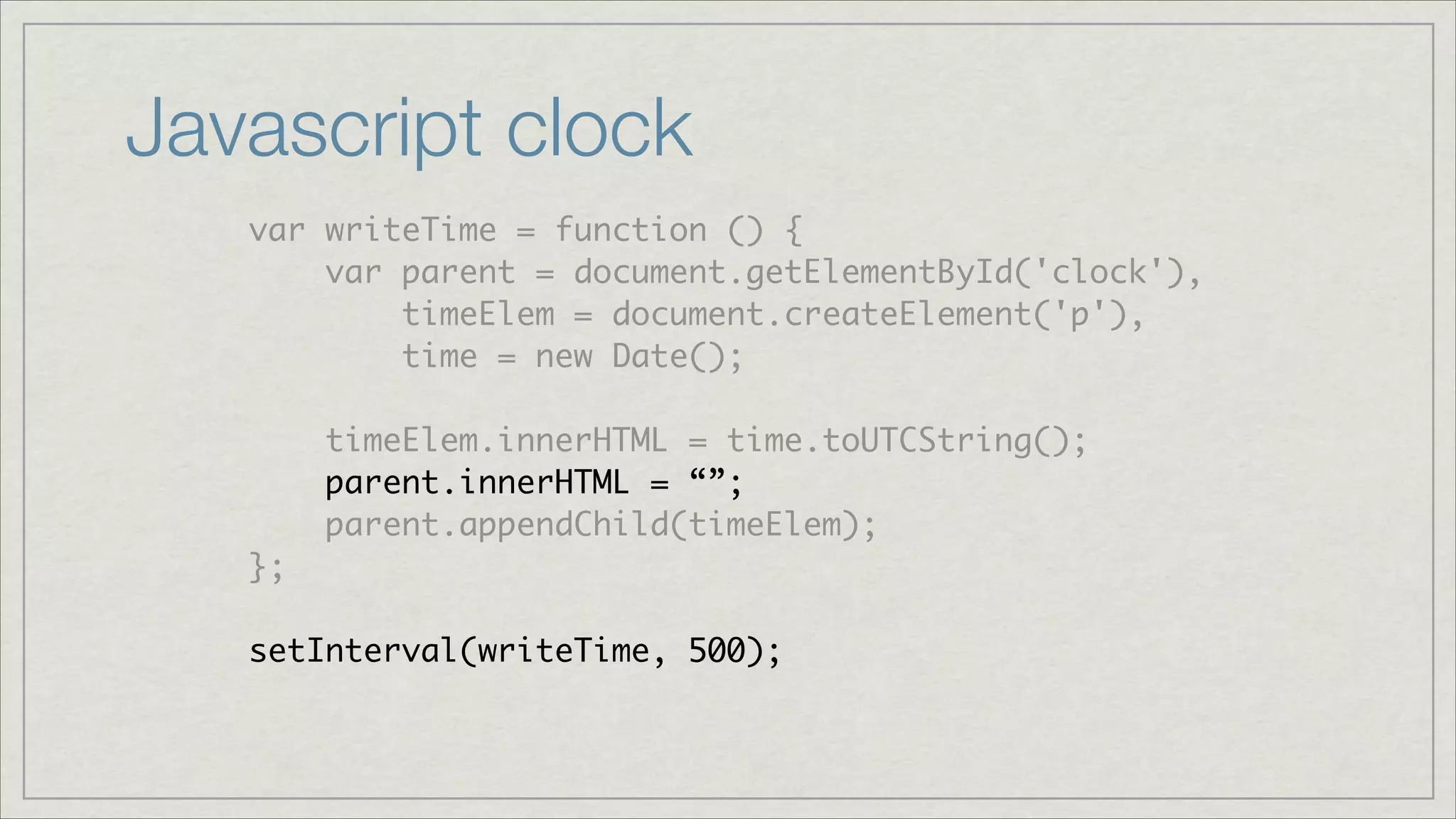
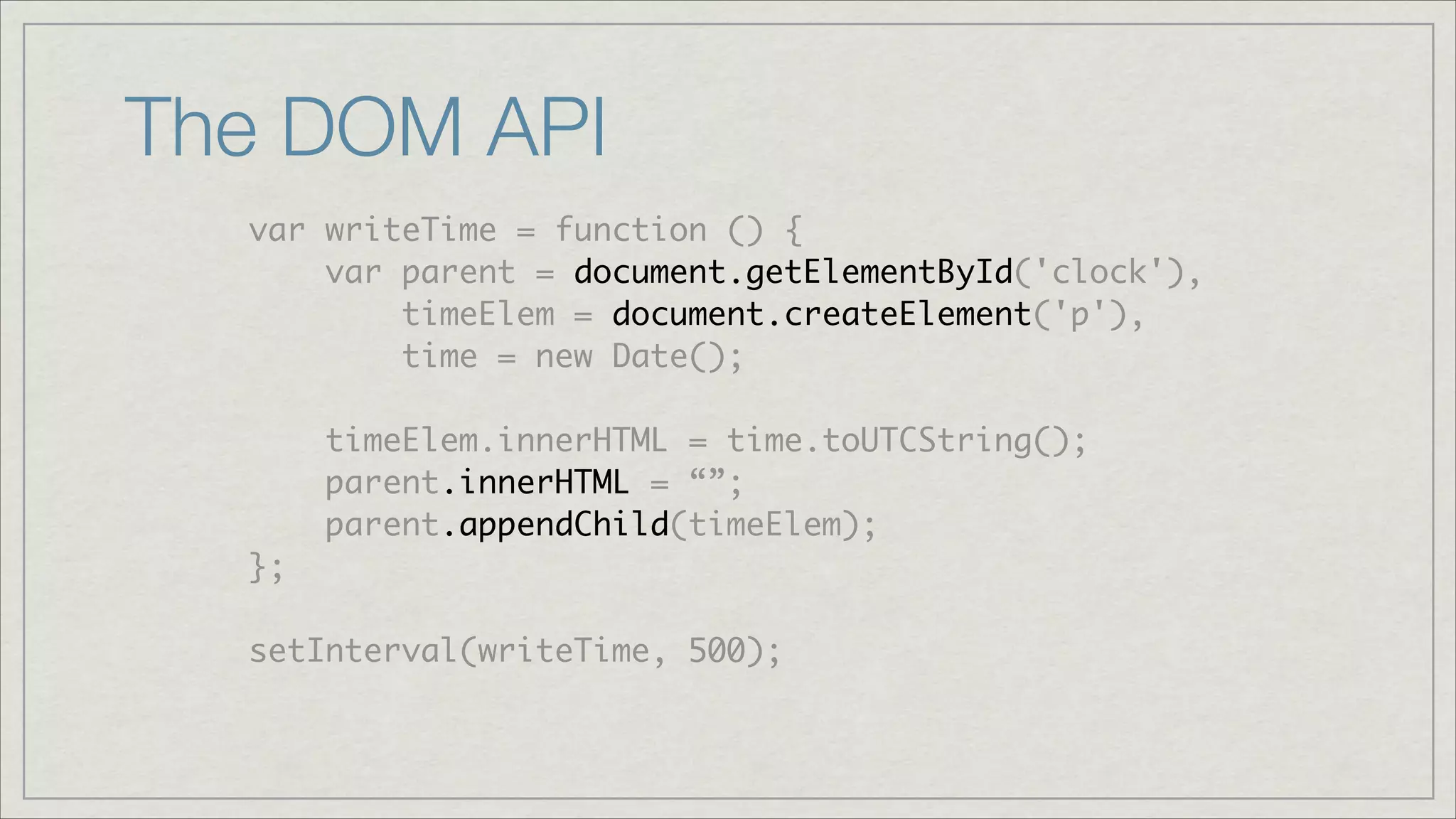
![Javascript
[proper]](https://image.slidesharecdn.com/02introtojs-140227072659-phpapp02/75/02-Introduction-to-Javascript-8-2048.jpg)
![Data Types
String:
var myString = “Hello World”;
!
Number
var myNum = 42;
!
Array
var myArr = [5, 6, “seven”, 8];
!
Object
var myObj = {
key1: “Value”,
key2: 42,
anotherKey: myArr
};](https://image.slidesharecdn.com/02introtojs-140227072659-phpapp02/75/02-Introduction-to-Javascript-9-2048.jpg)
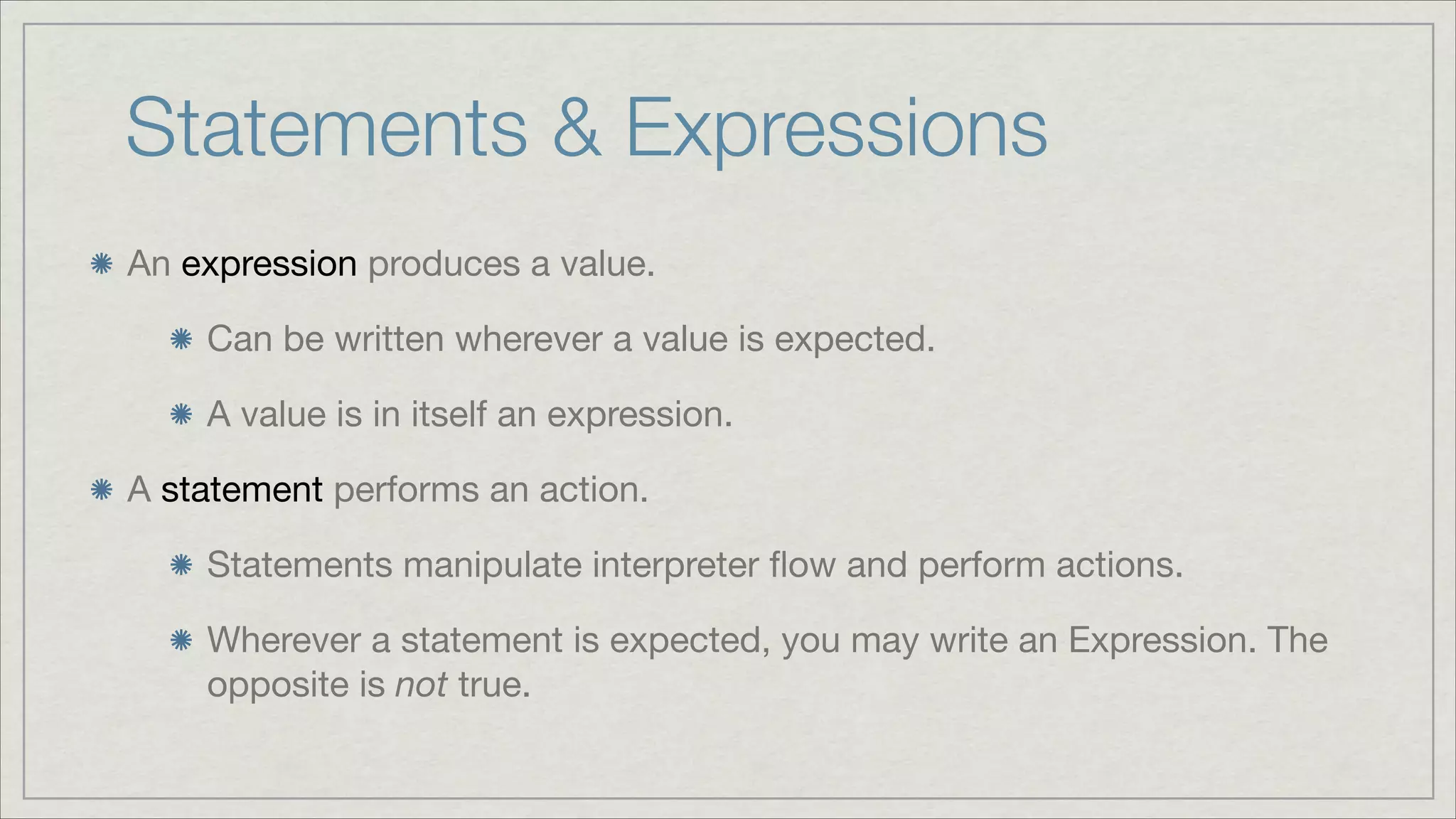
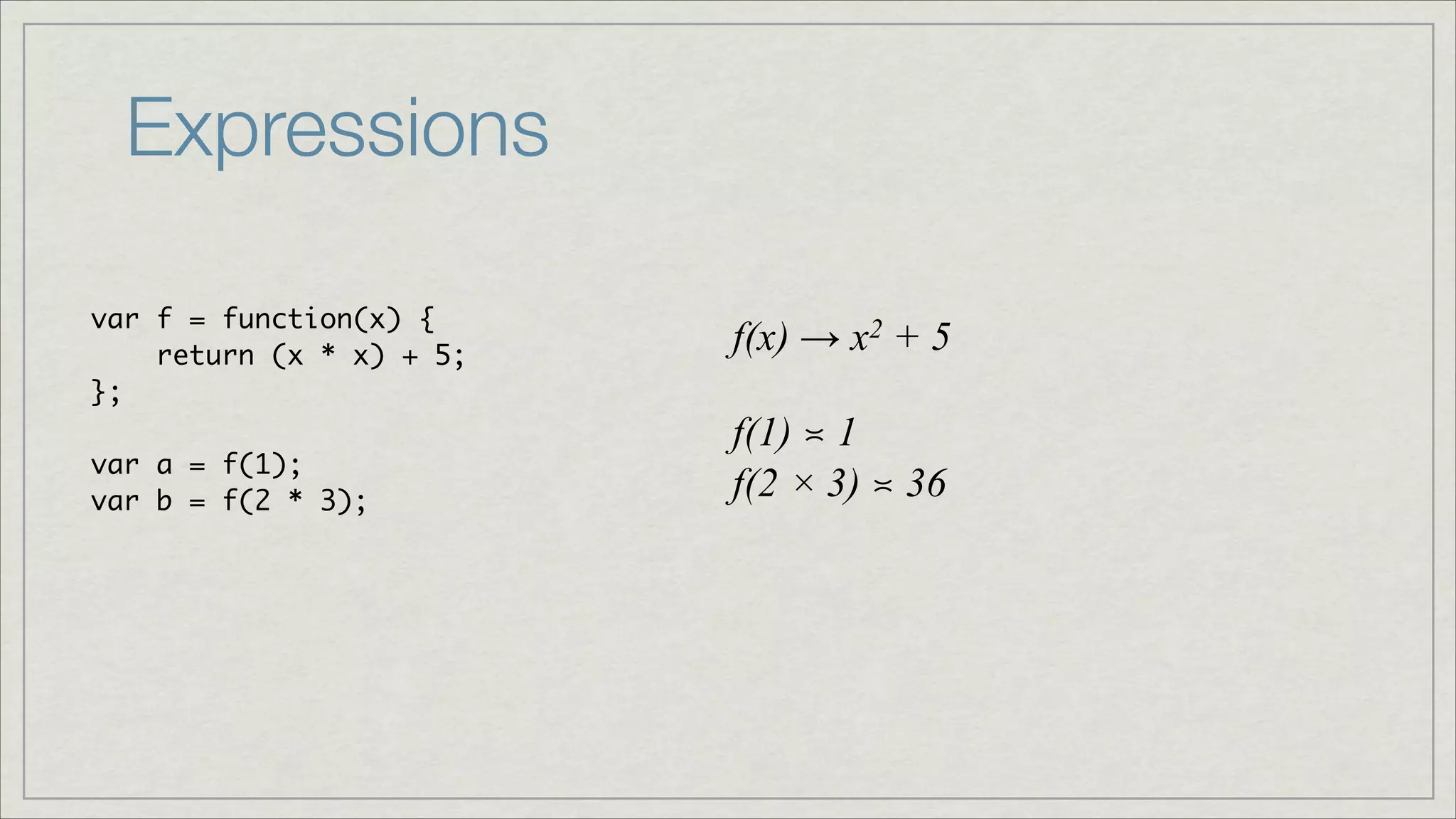
![Statements
var myStr = “Hello World”,
i;
!
for (i = 0; i < myStr.length; i++) {
console.log(myStr[i]);
}
var myStr = “Hello World”,
i = 0;
!
while (i < myStr.length) {
i++;
console.log(myStr[i]);
}](https://image.slidesharecdn.com/02introtojs-140227072659-phpapp02/75/02-Introduction-to-Javascript-12-2048.jpg)
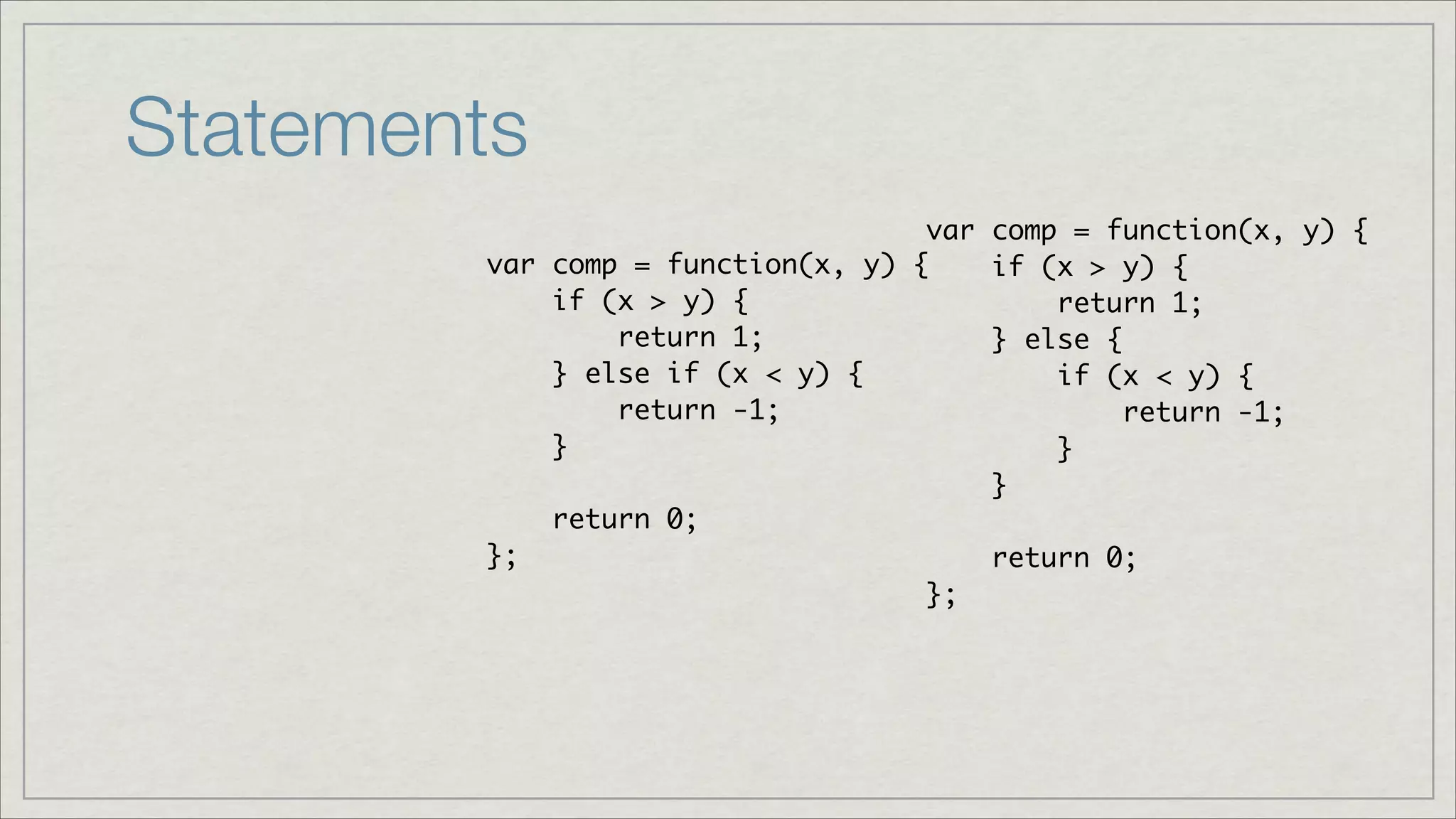
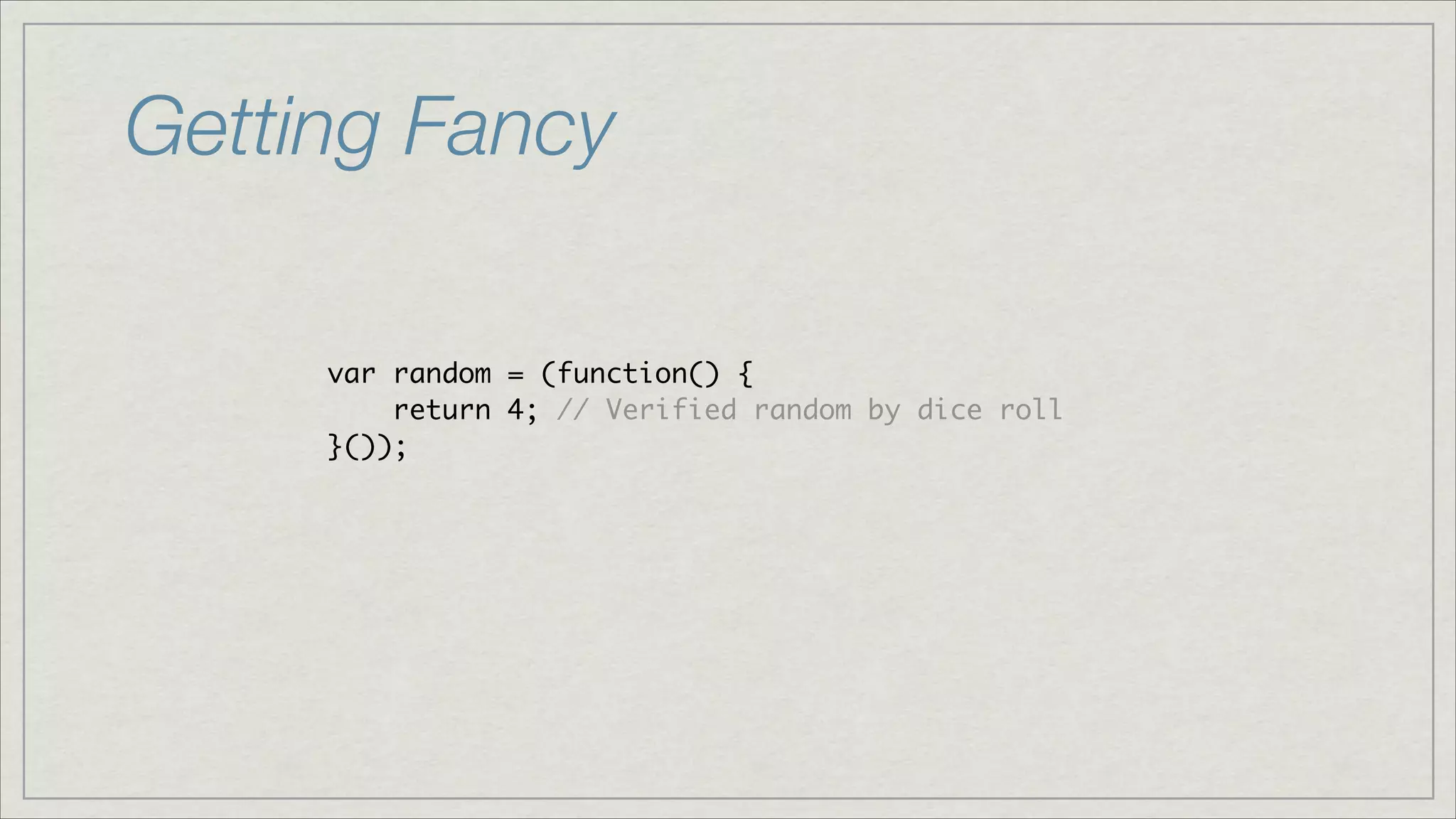
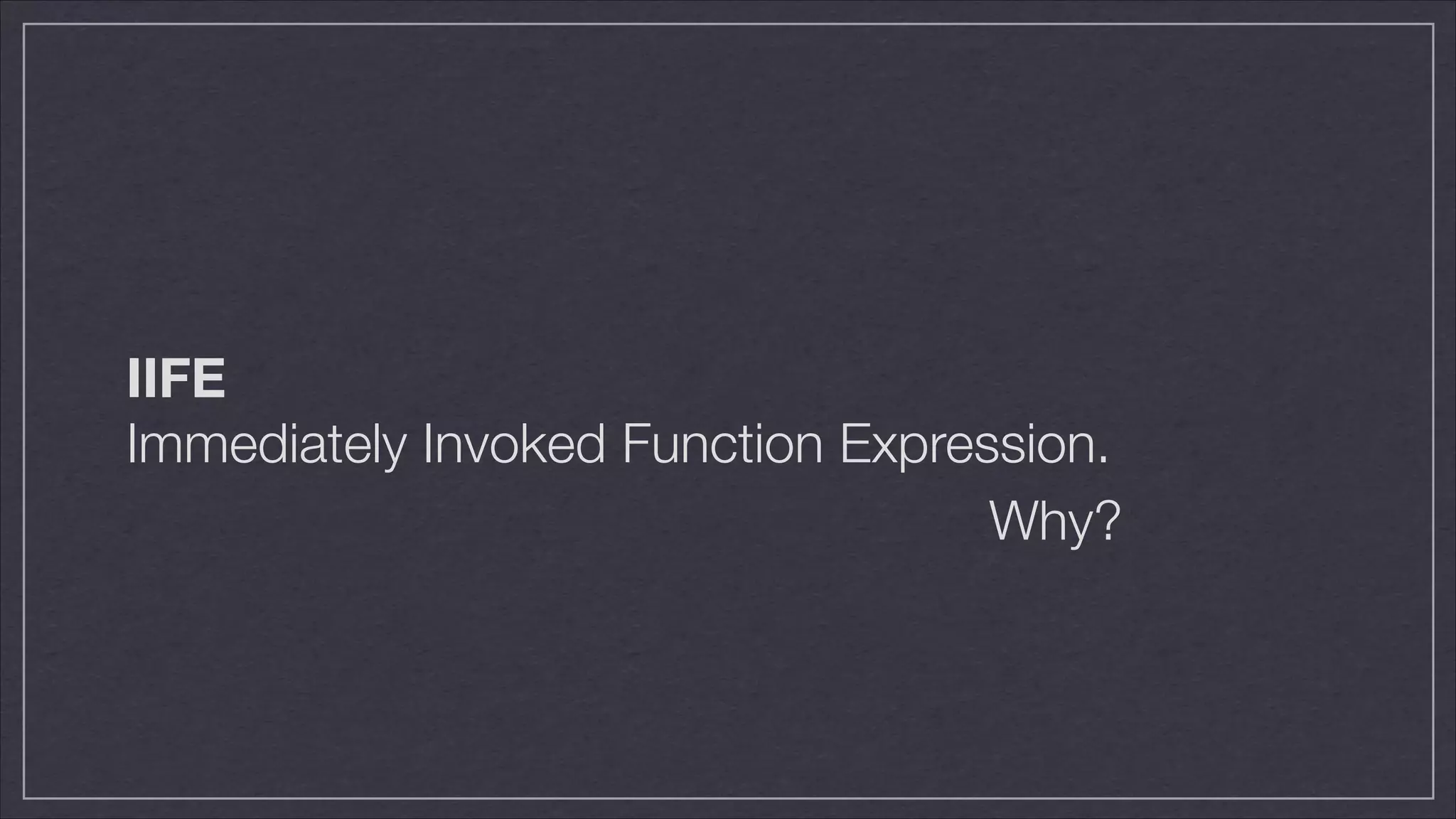
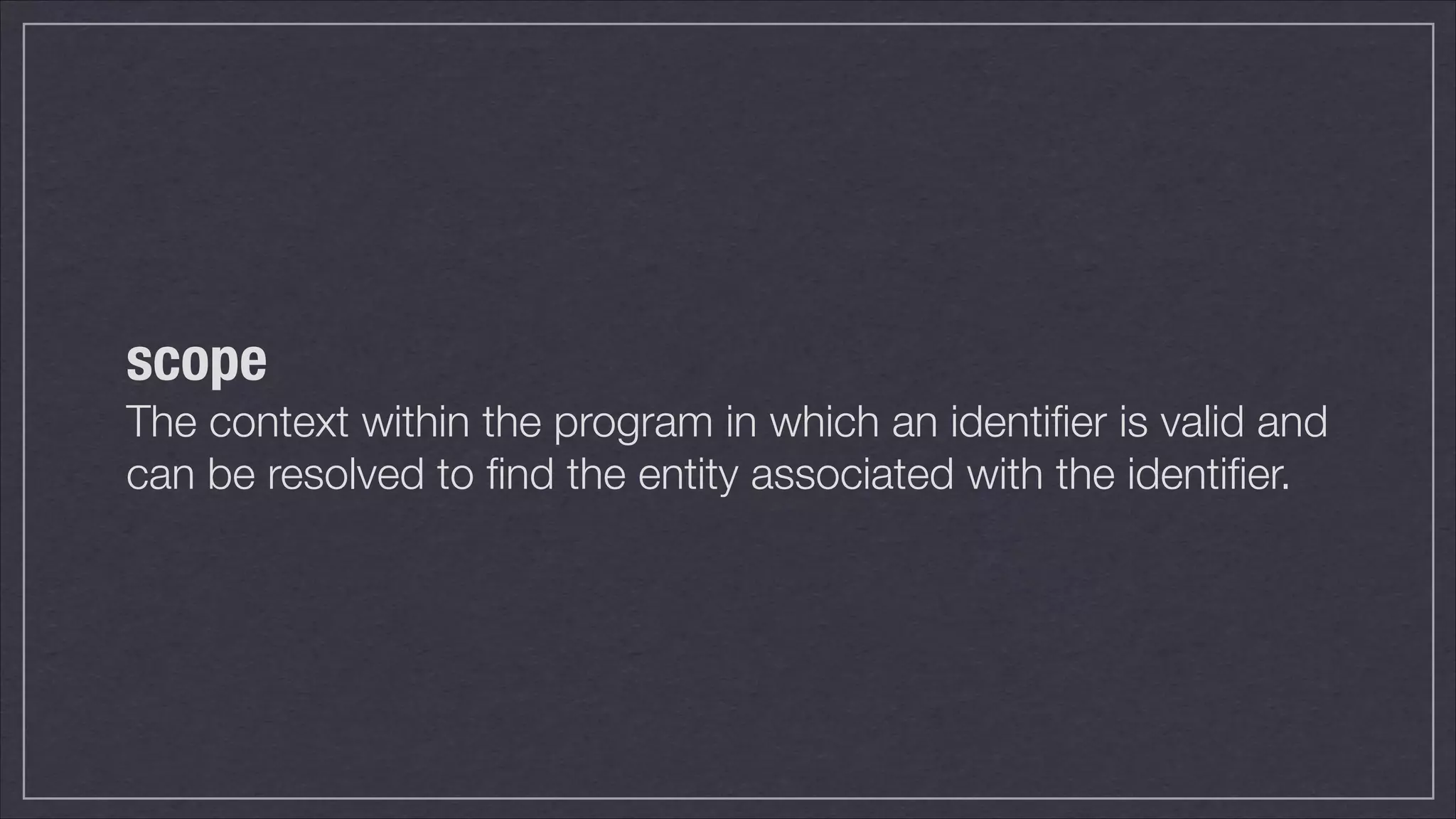
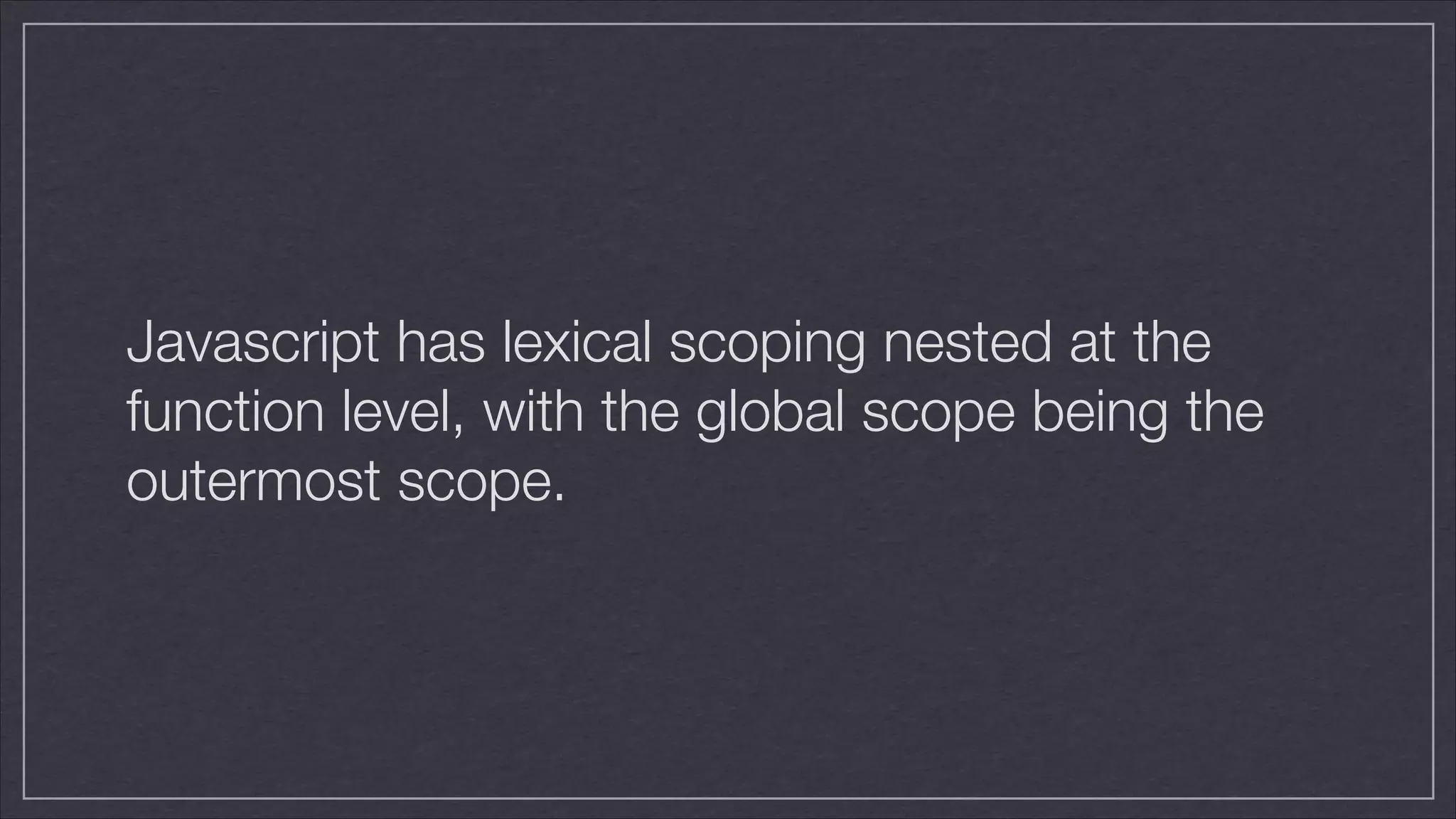
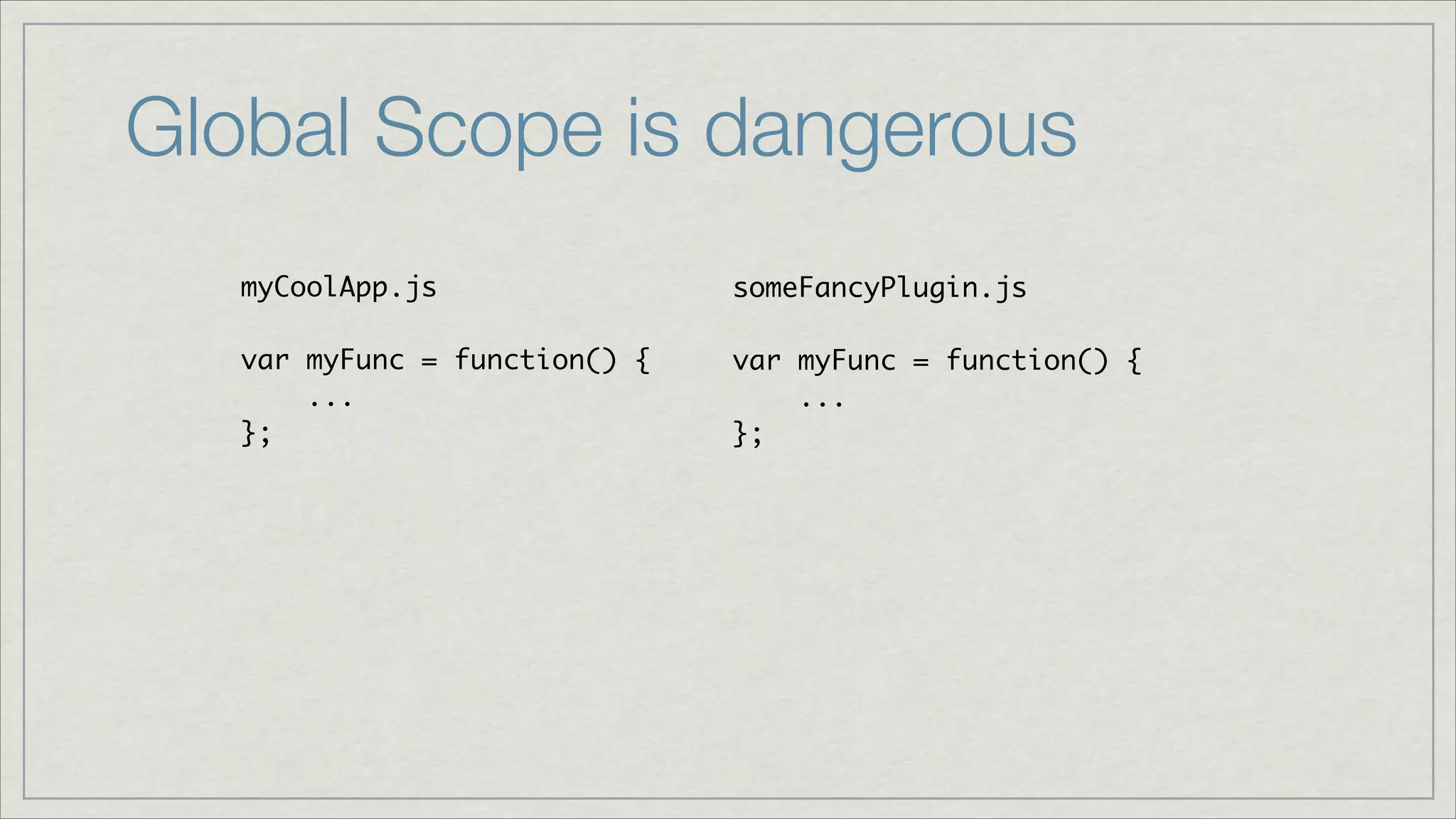
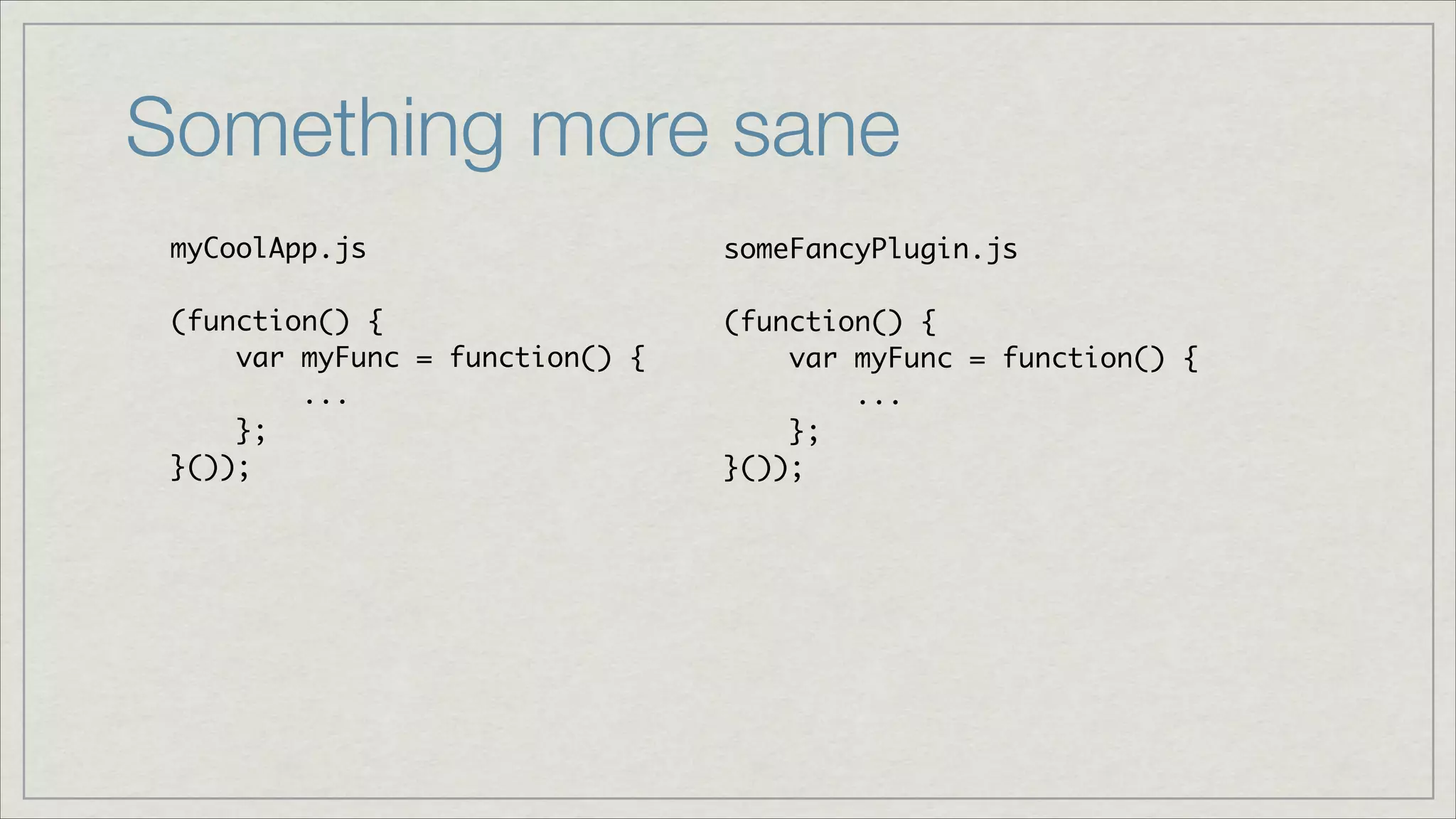
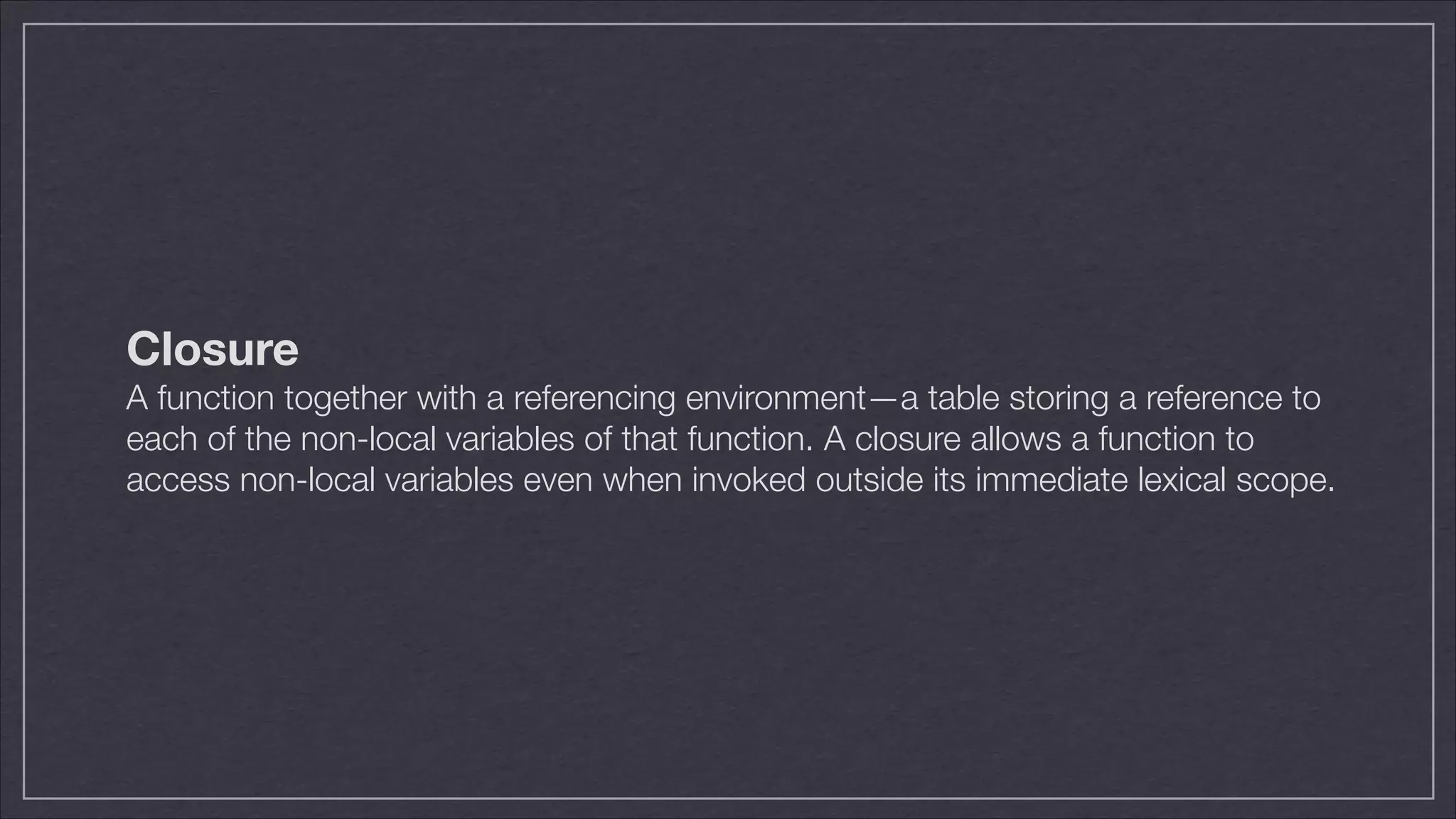
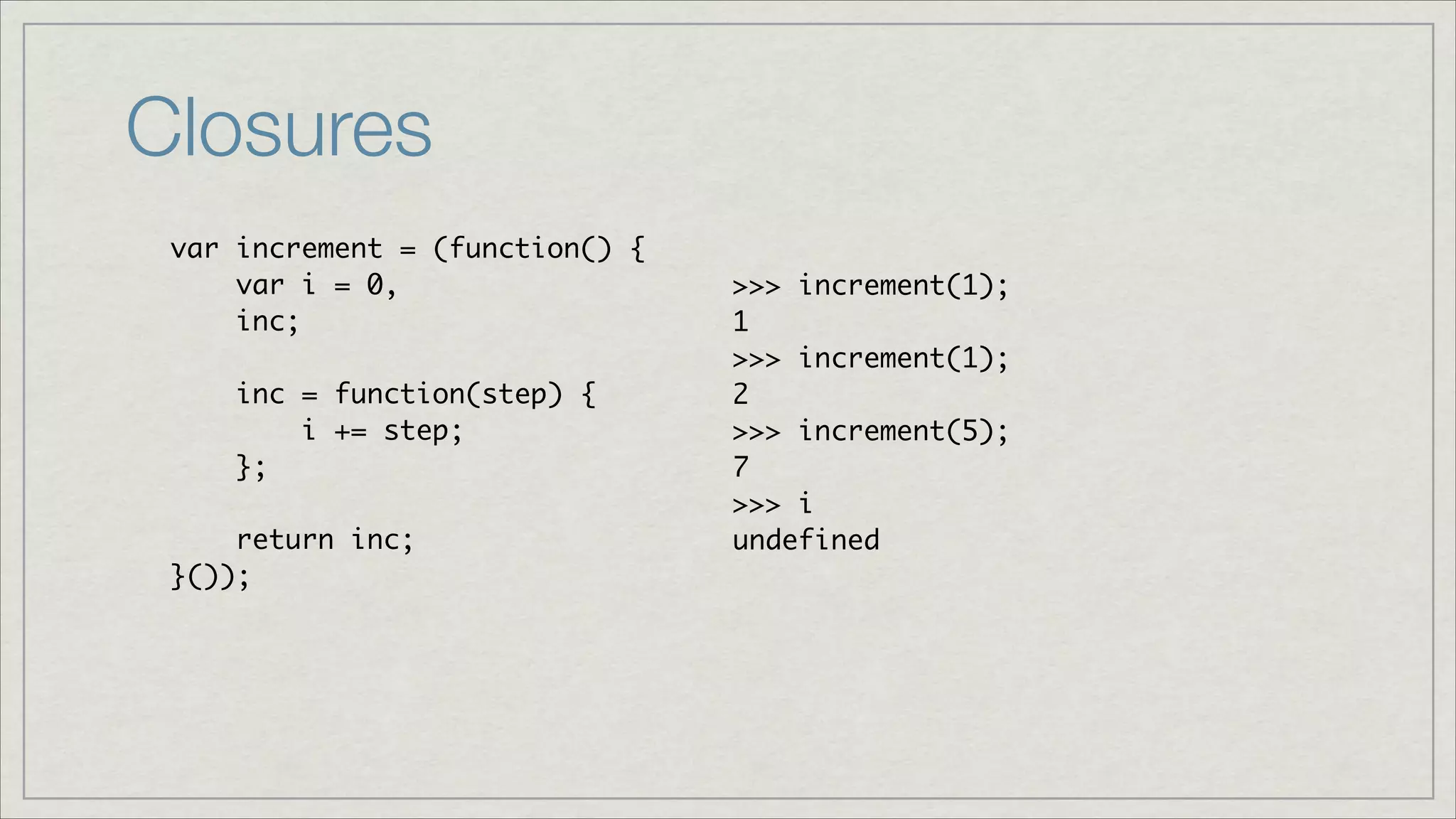
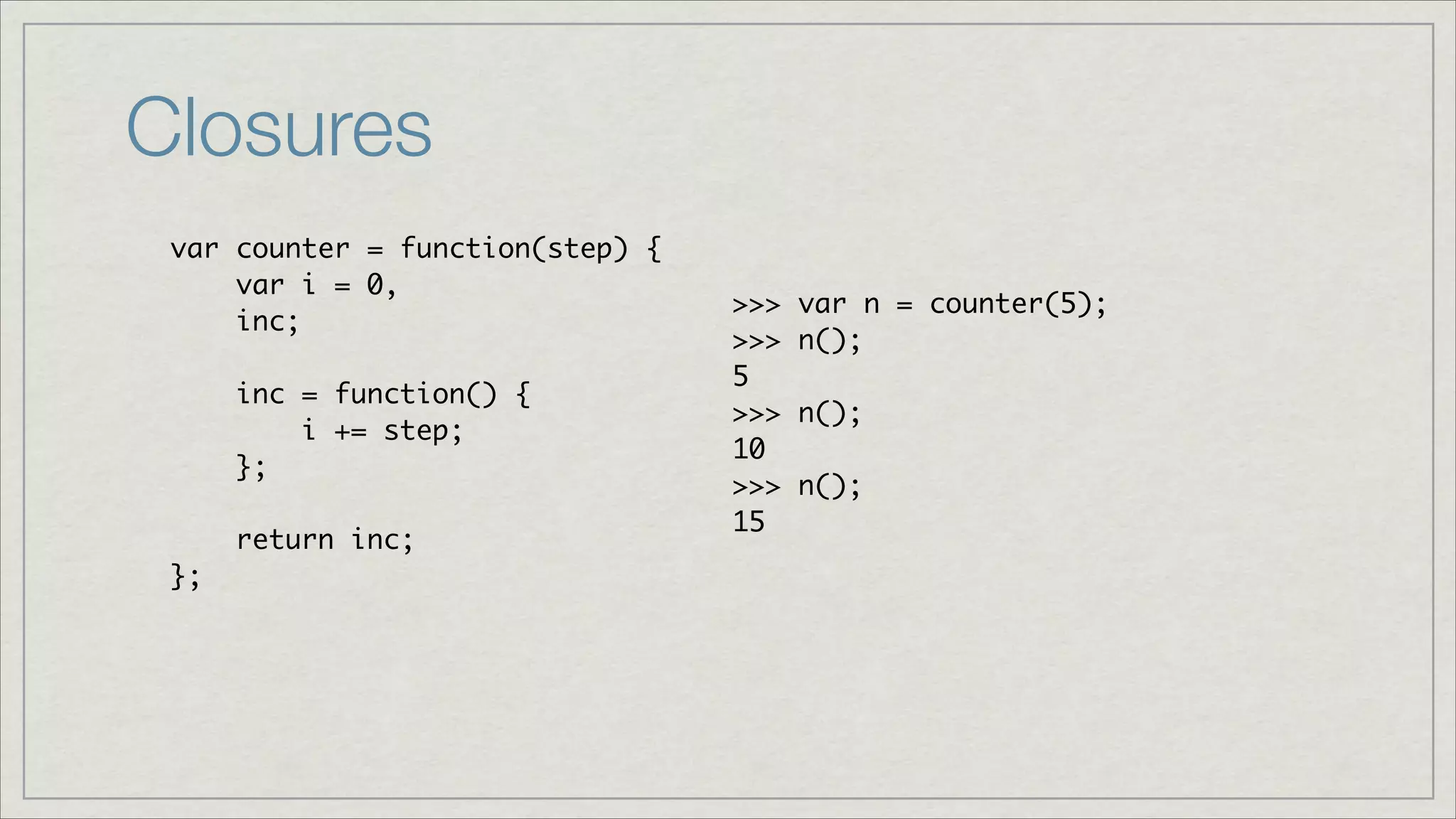
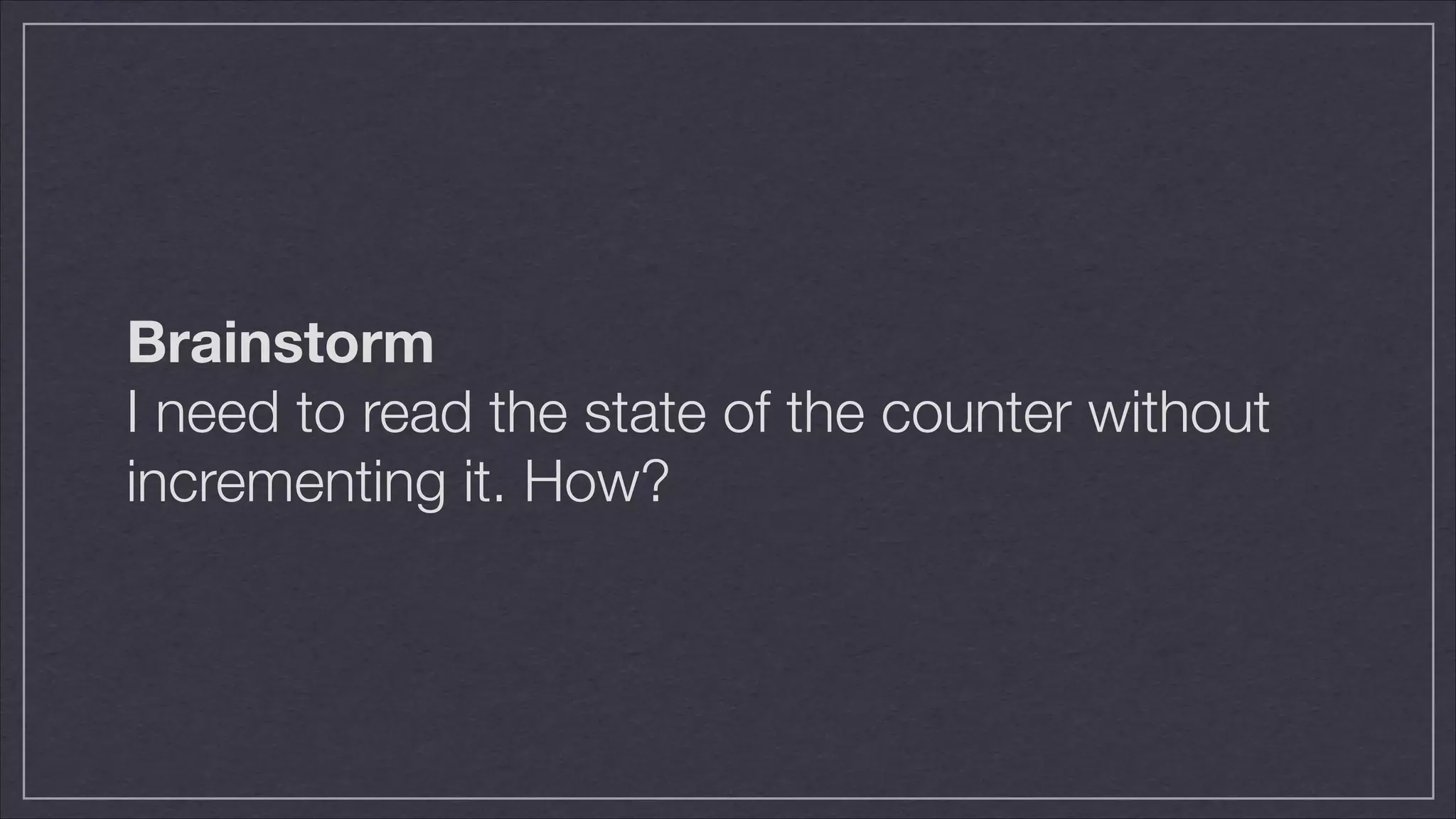
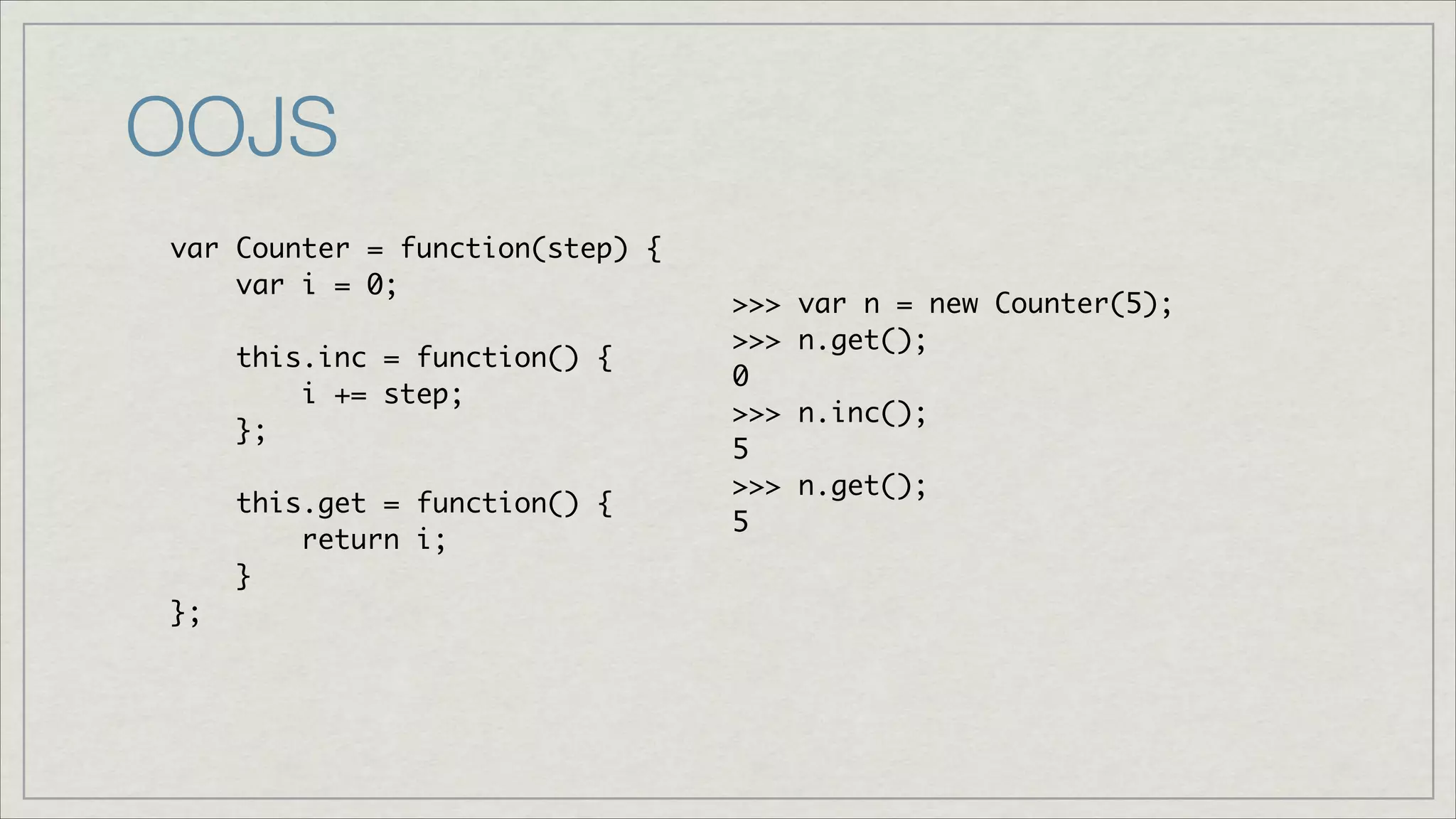
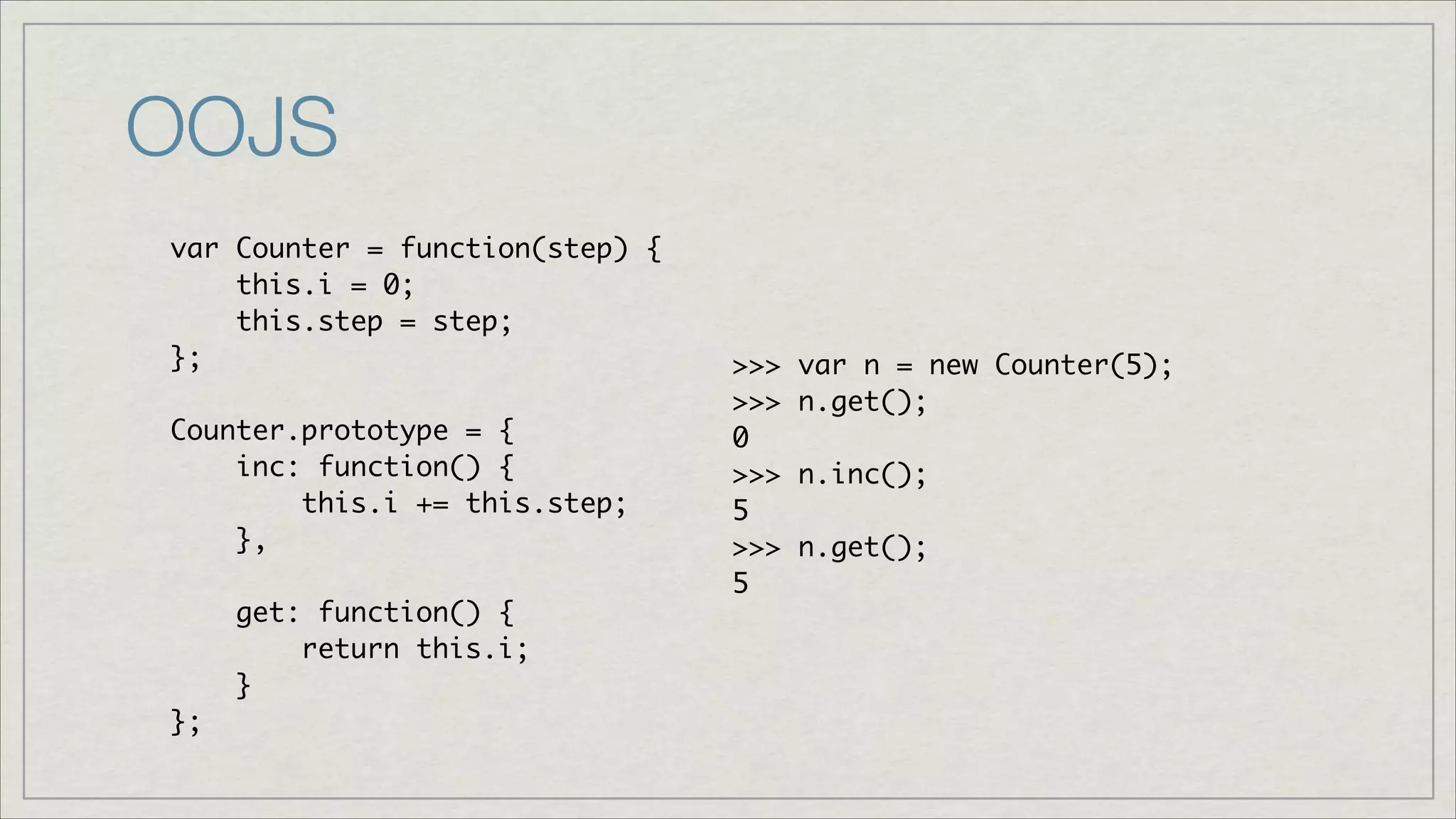
![Javascript
[DOM]](https://image.slidesharecdn.com/02introtojs-140227072659-phpapp02/75/02-Introduction-to-Javascript-26-2048.jpg)
